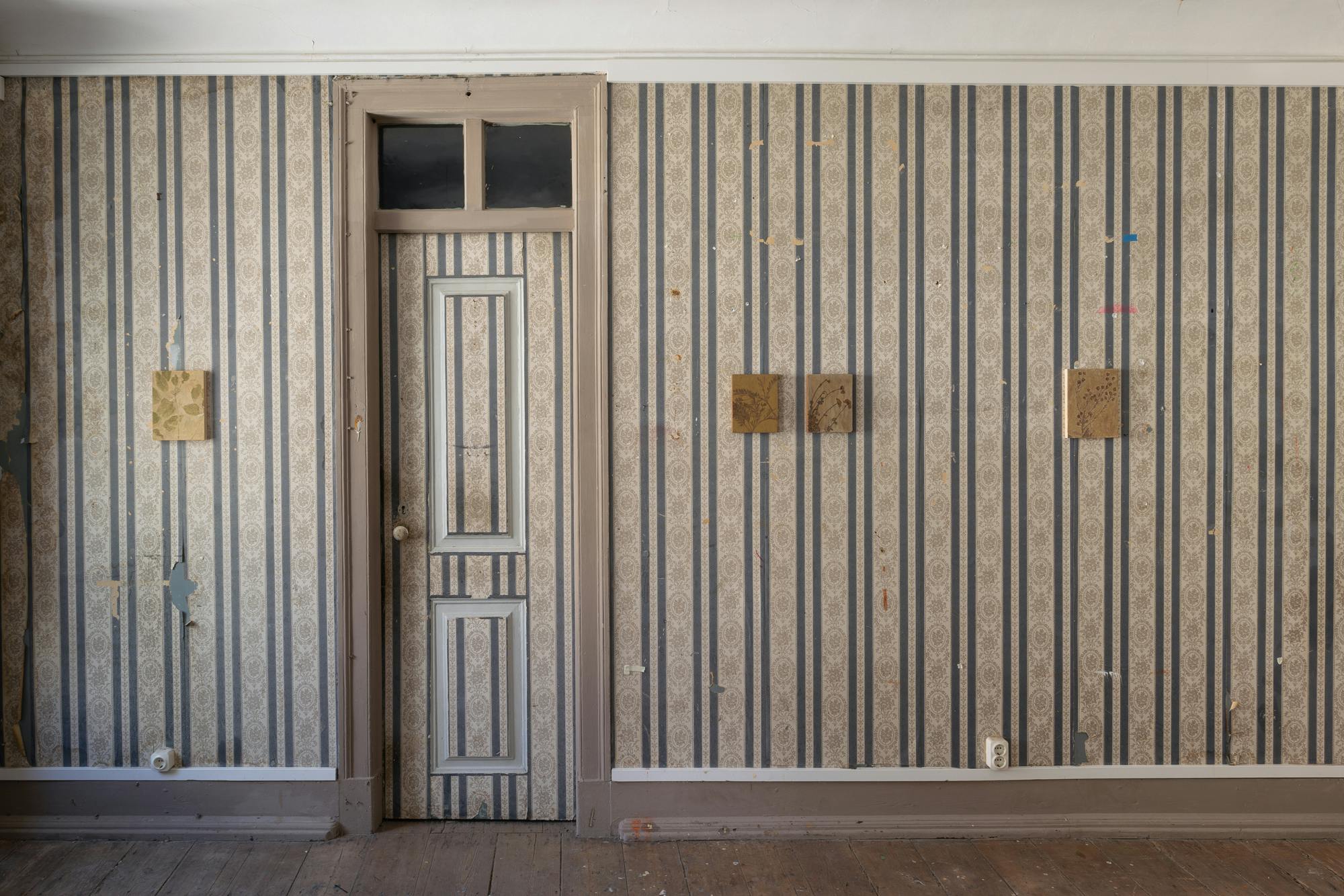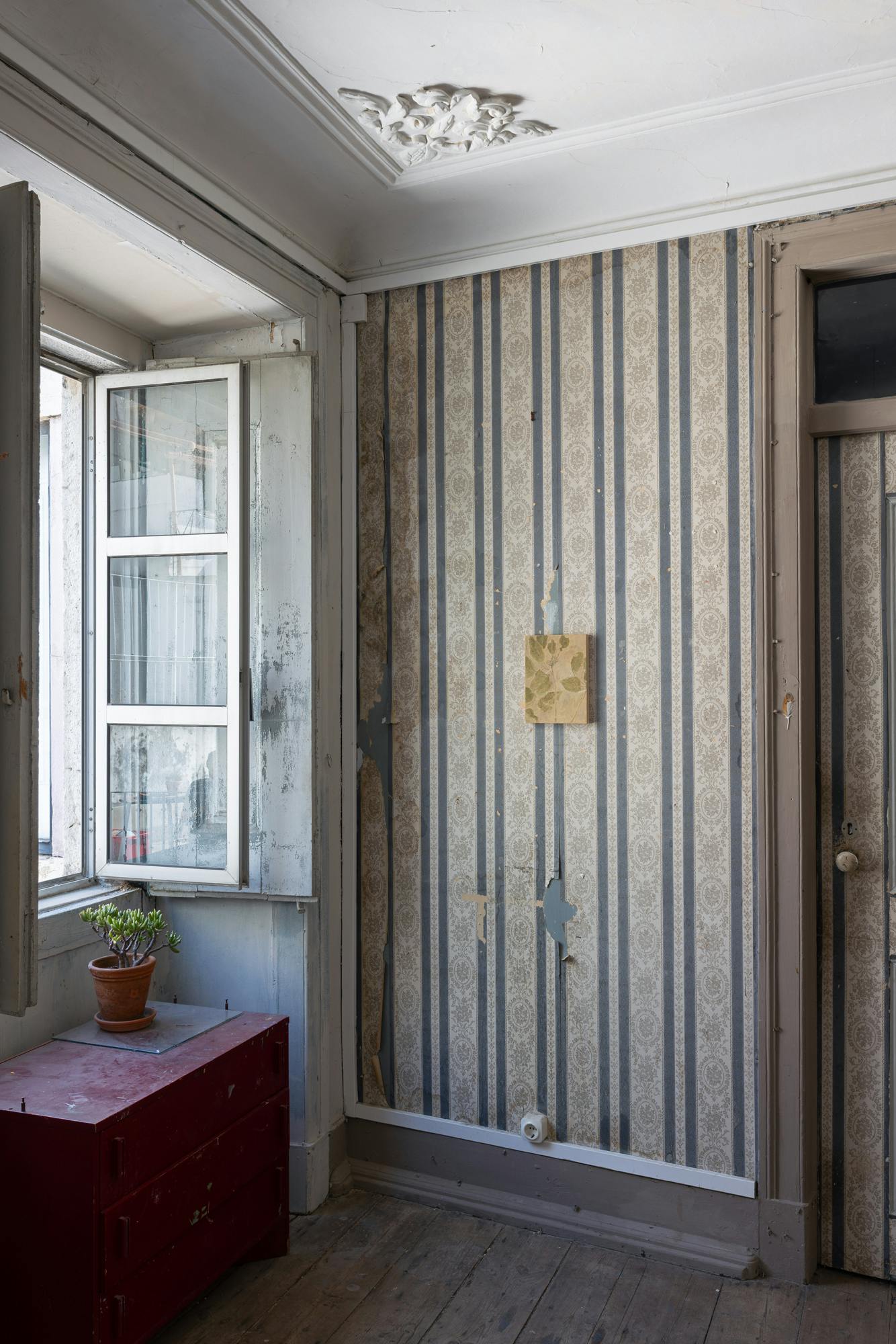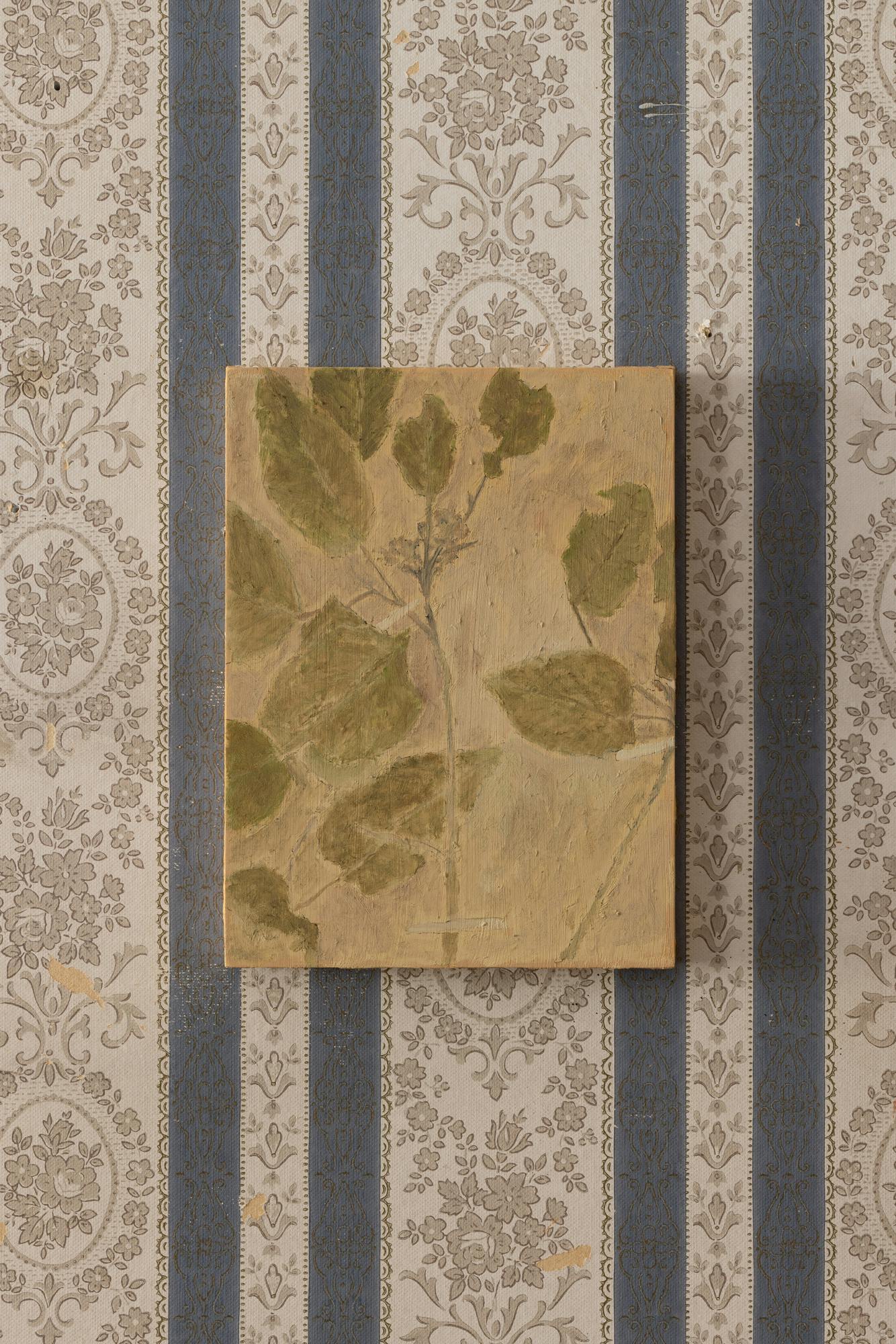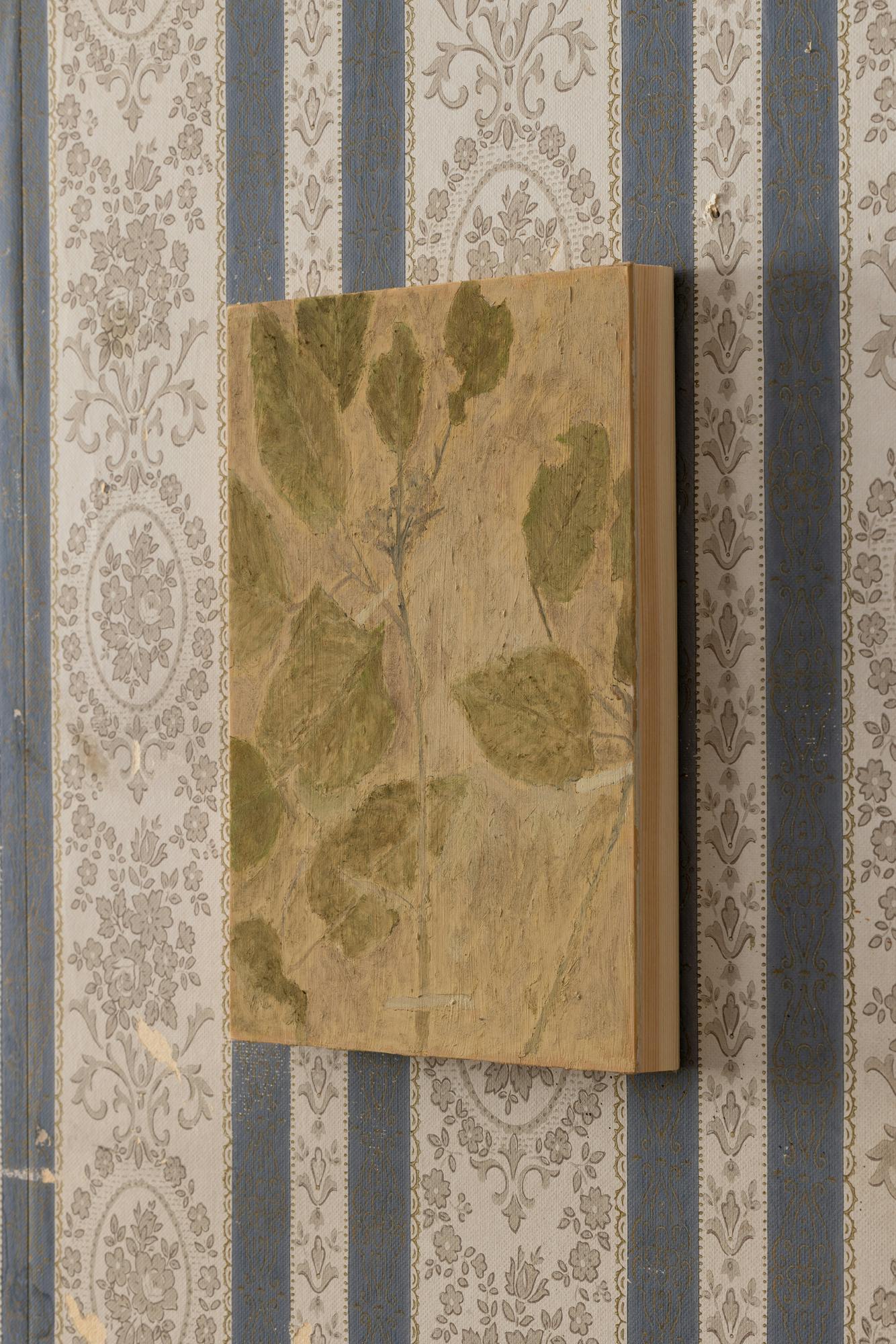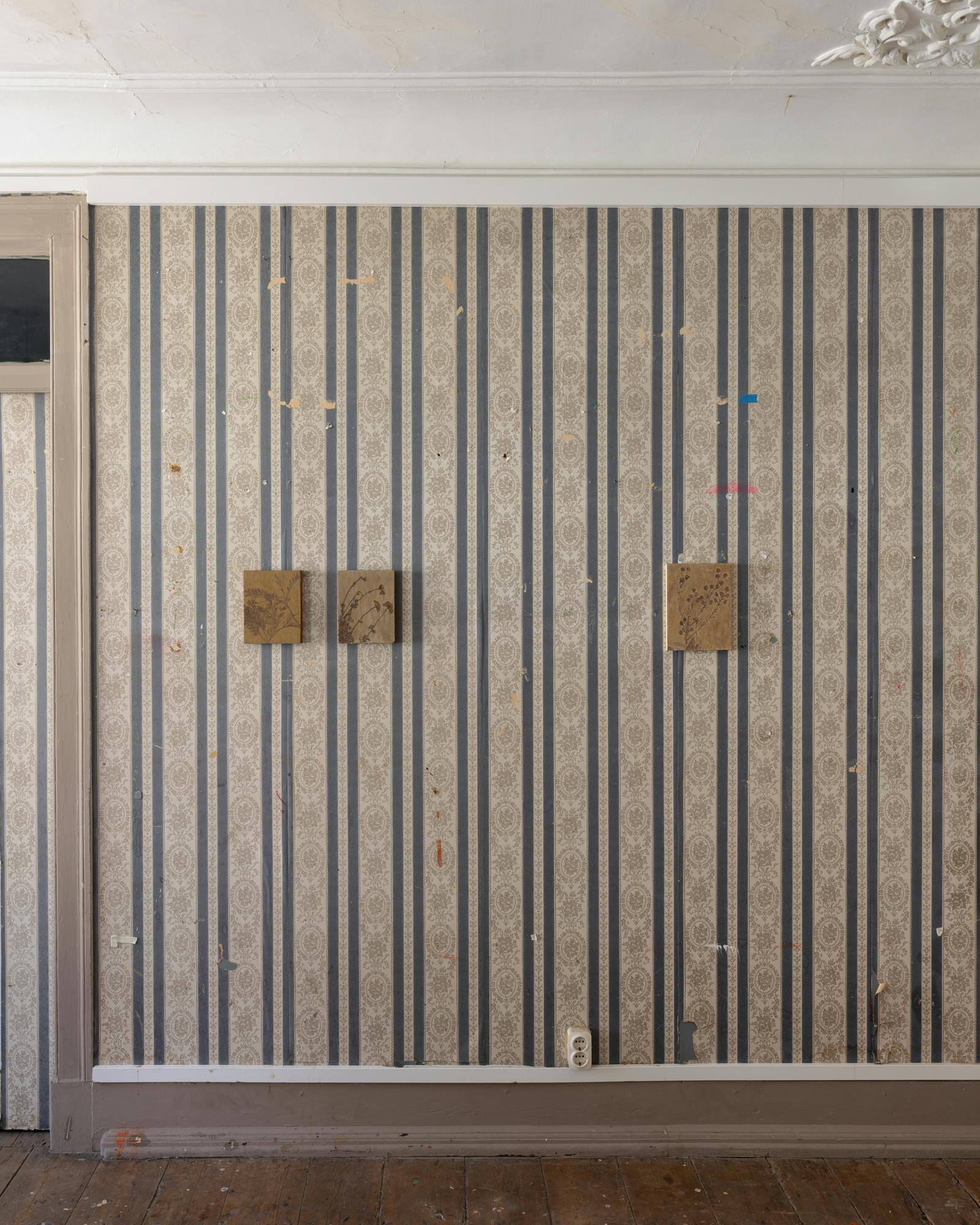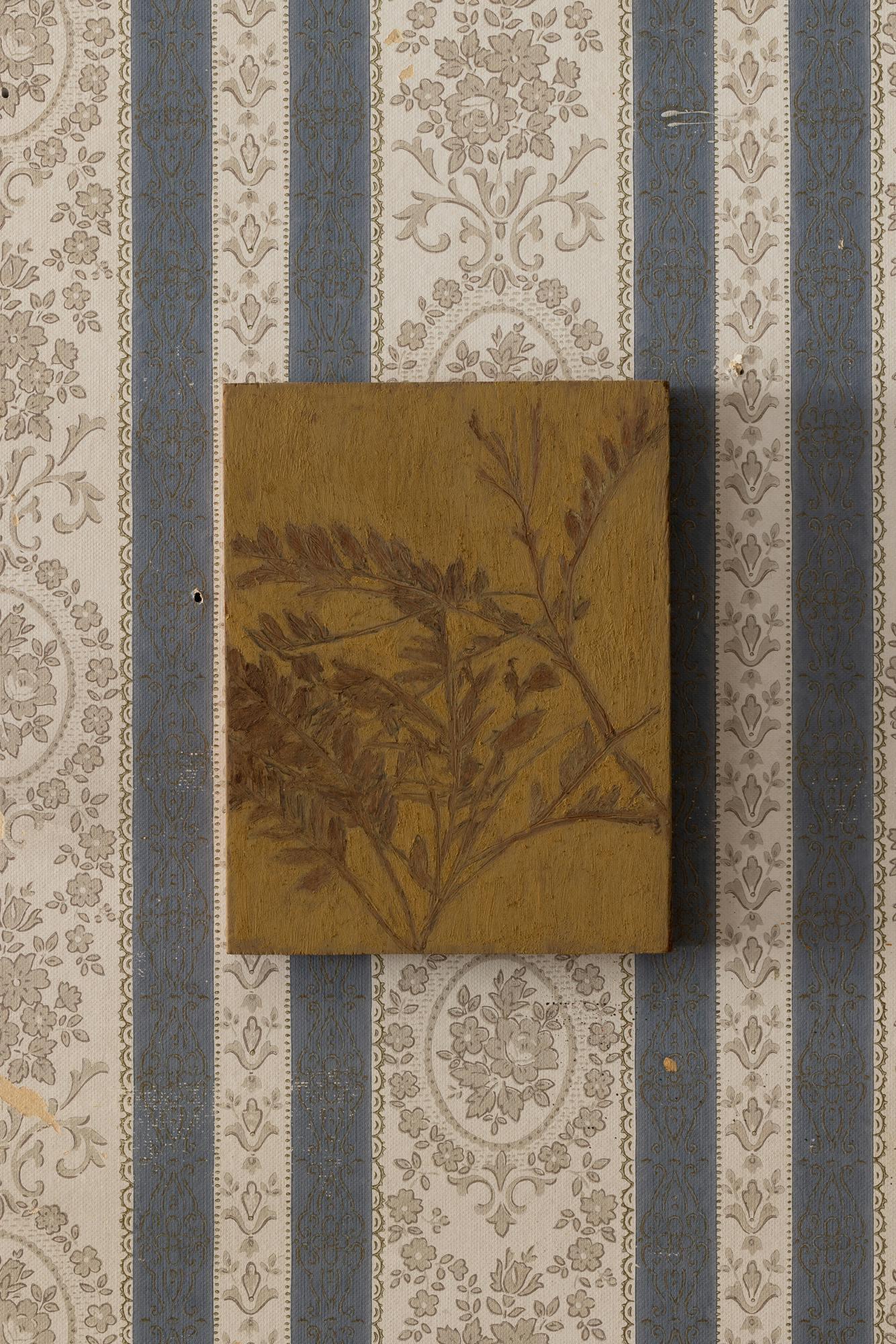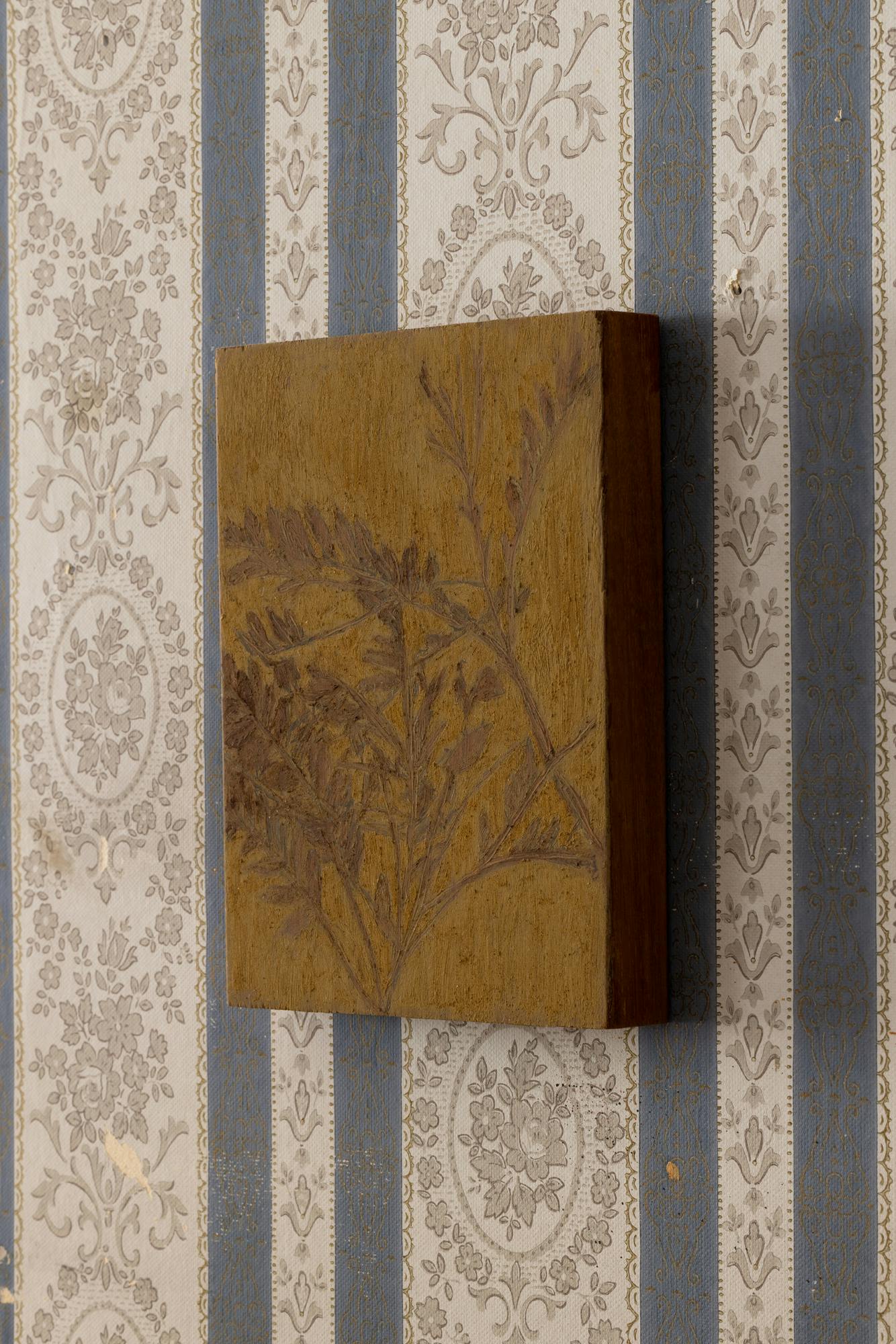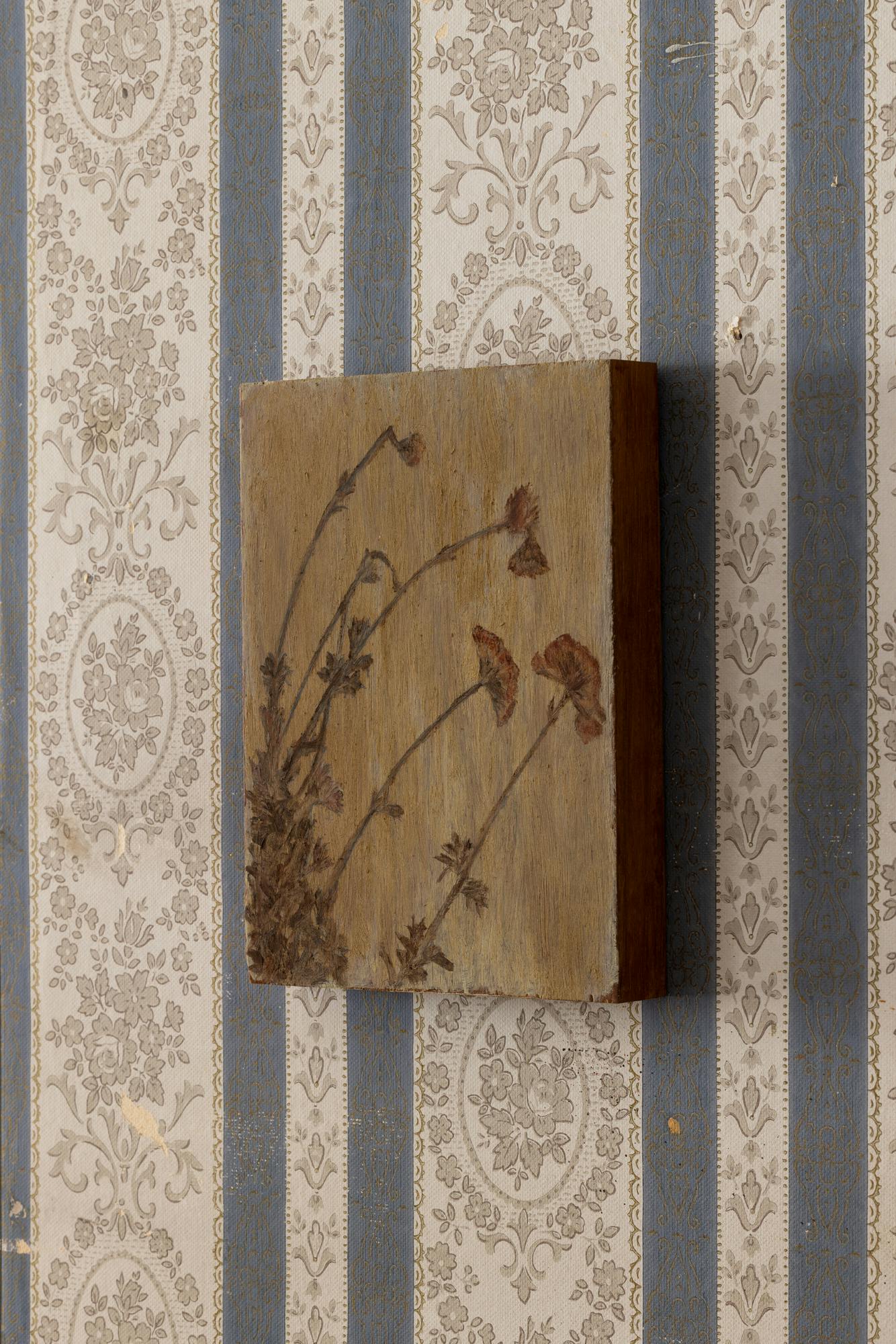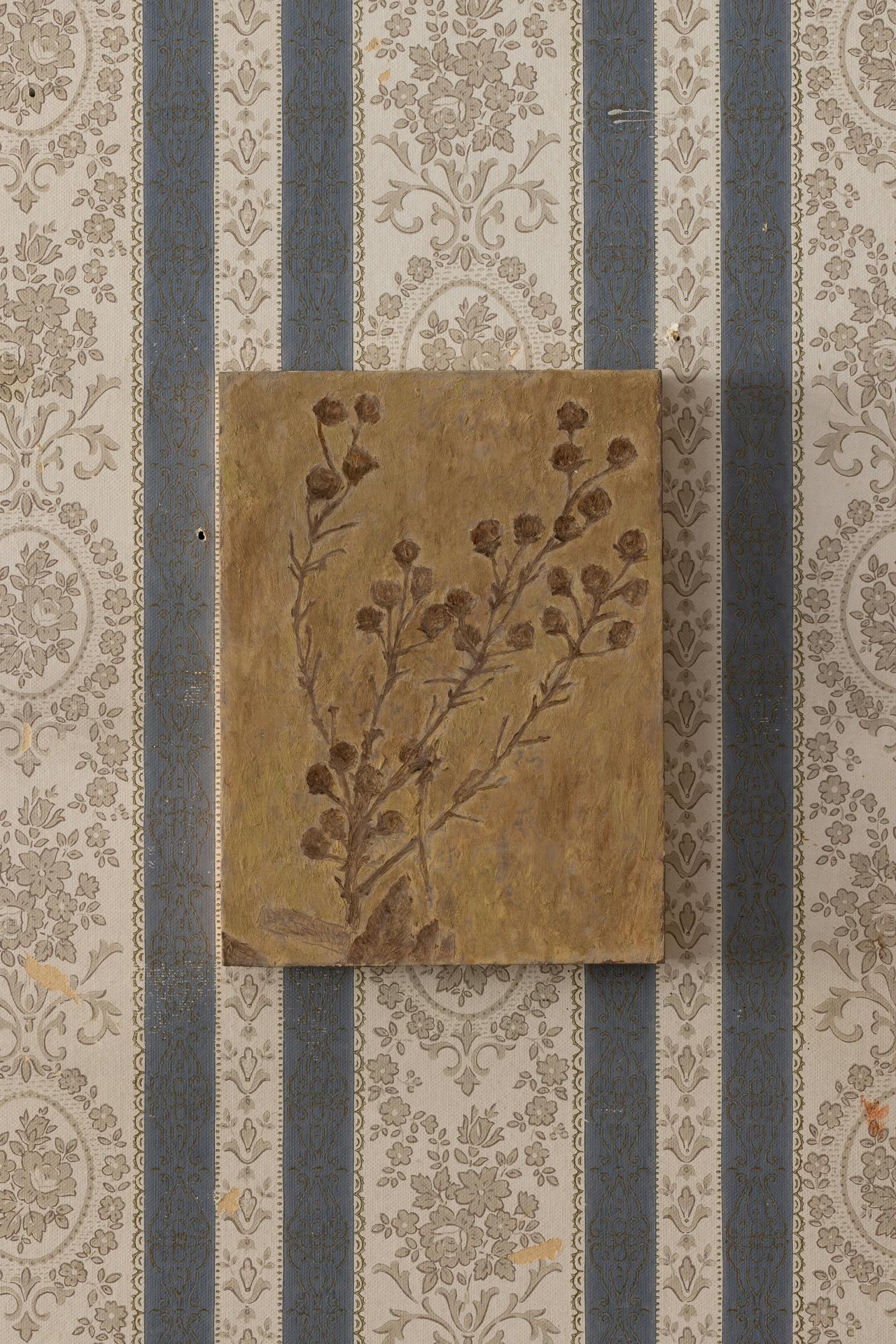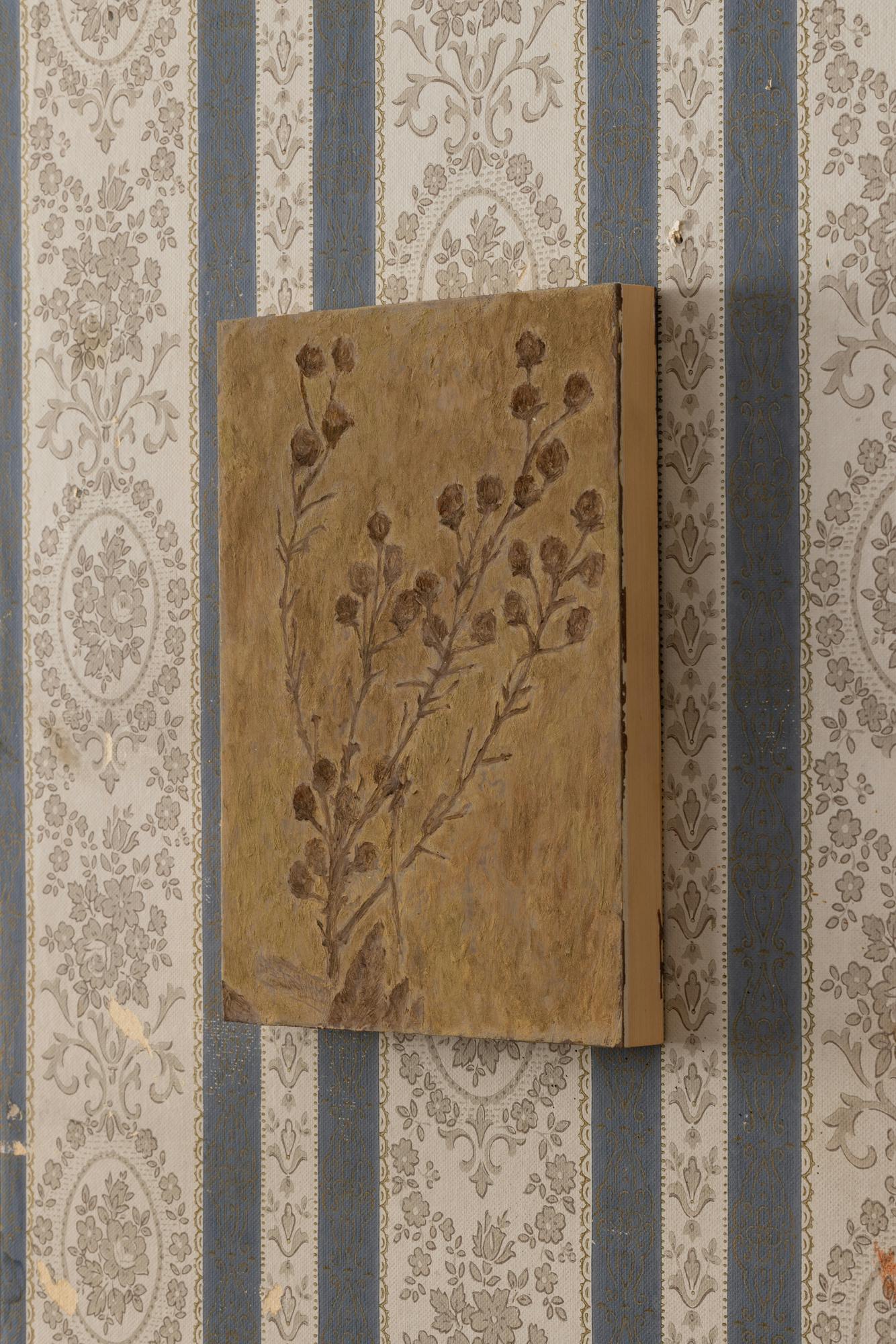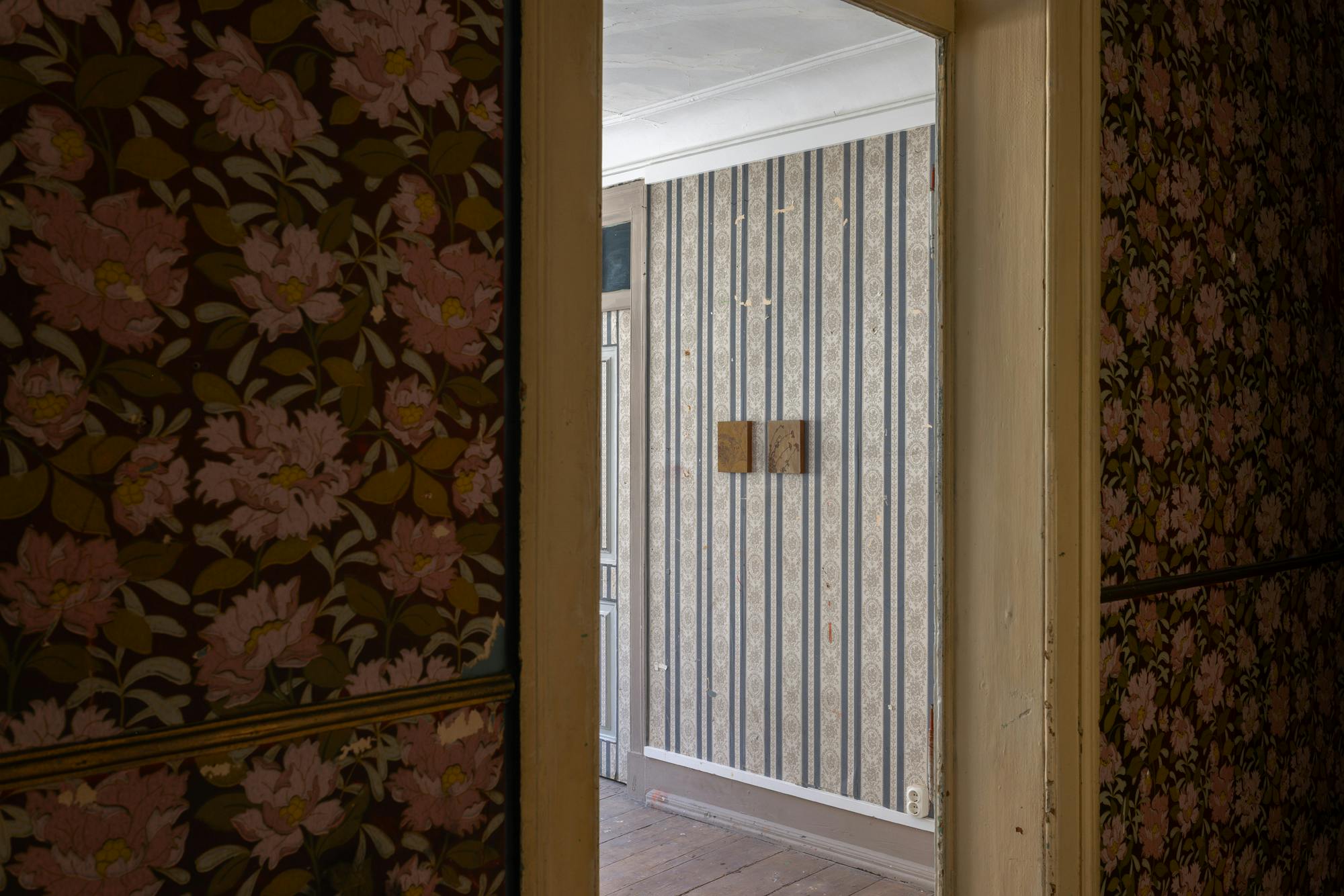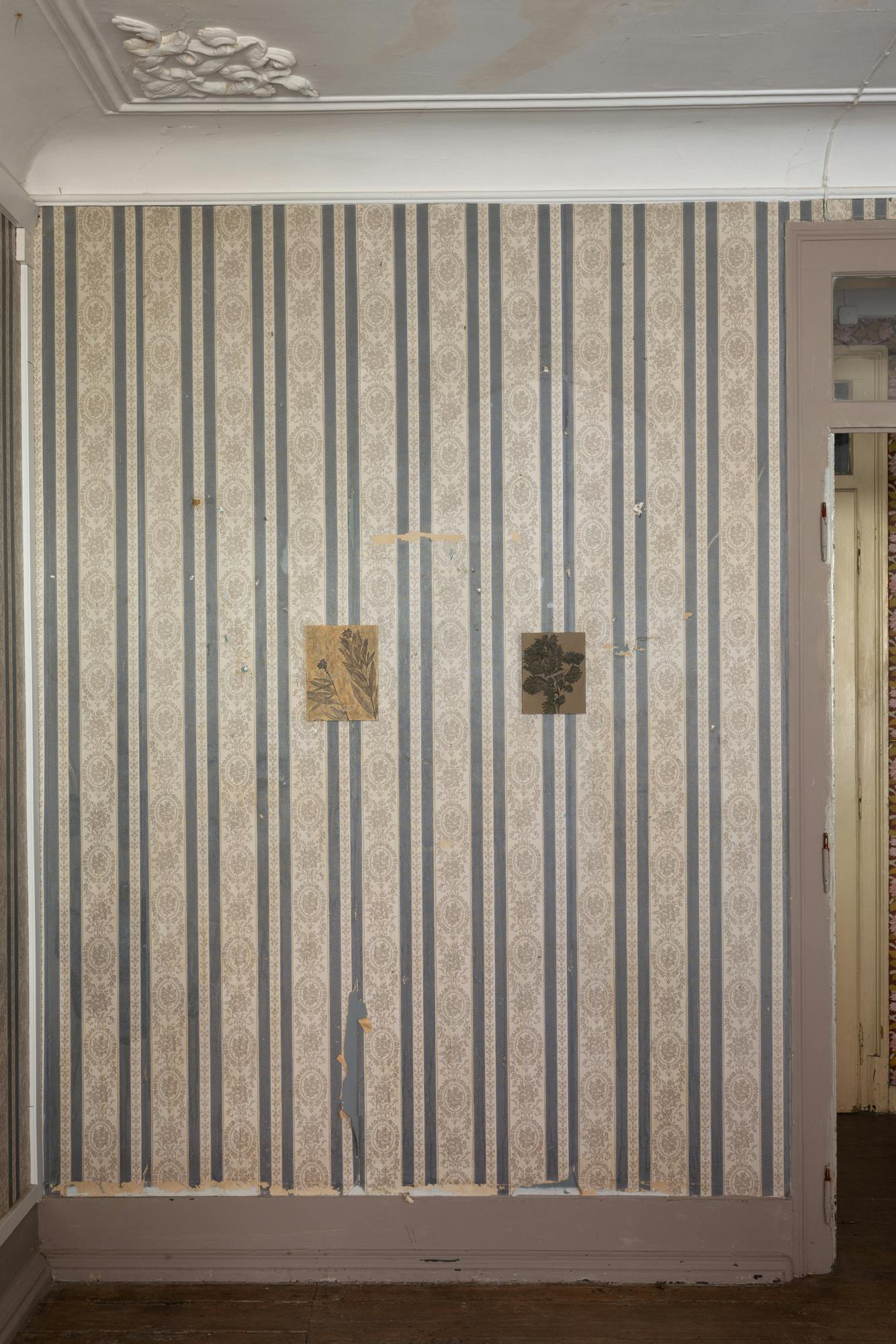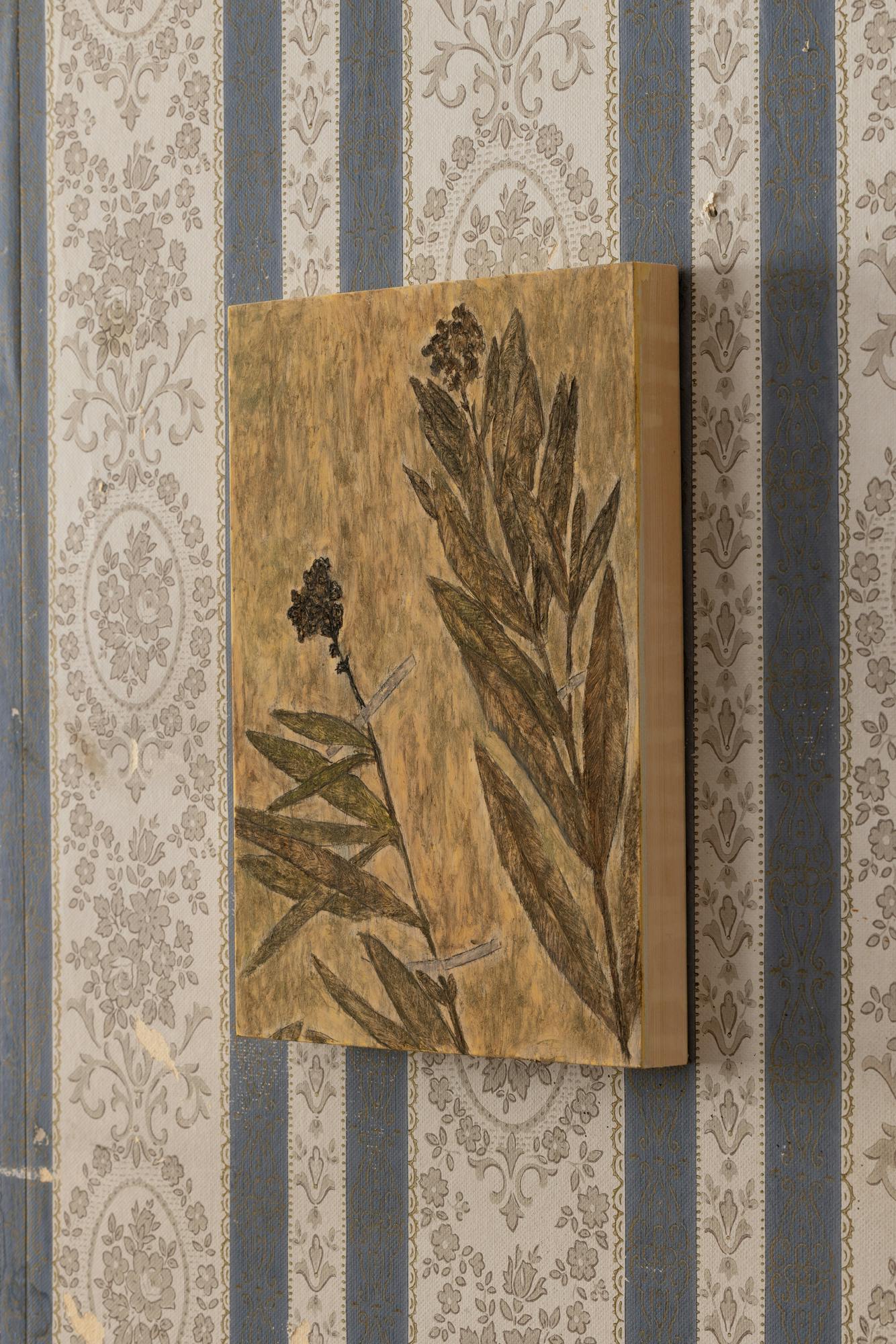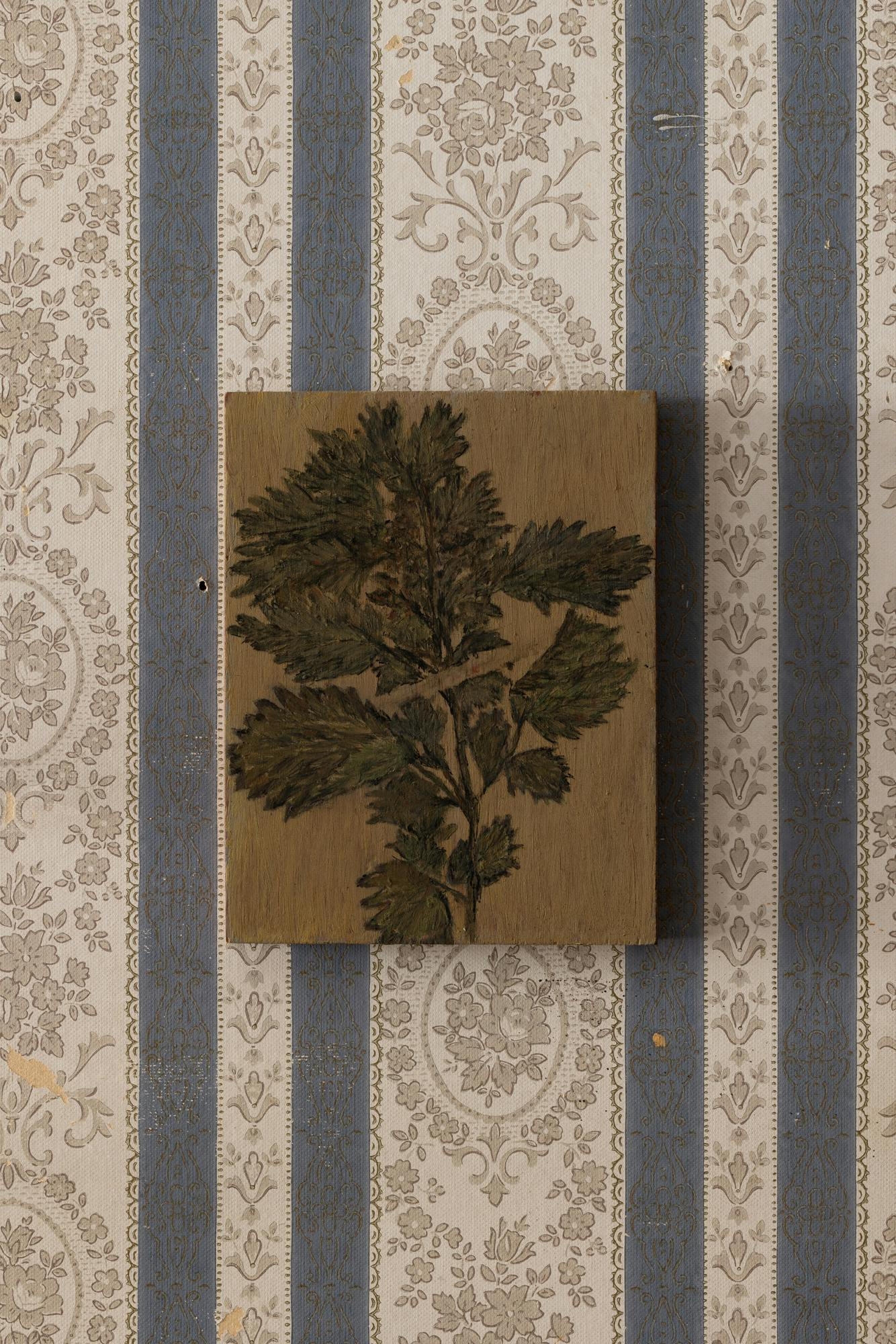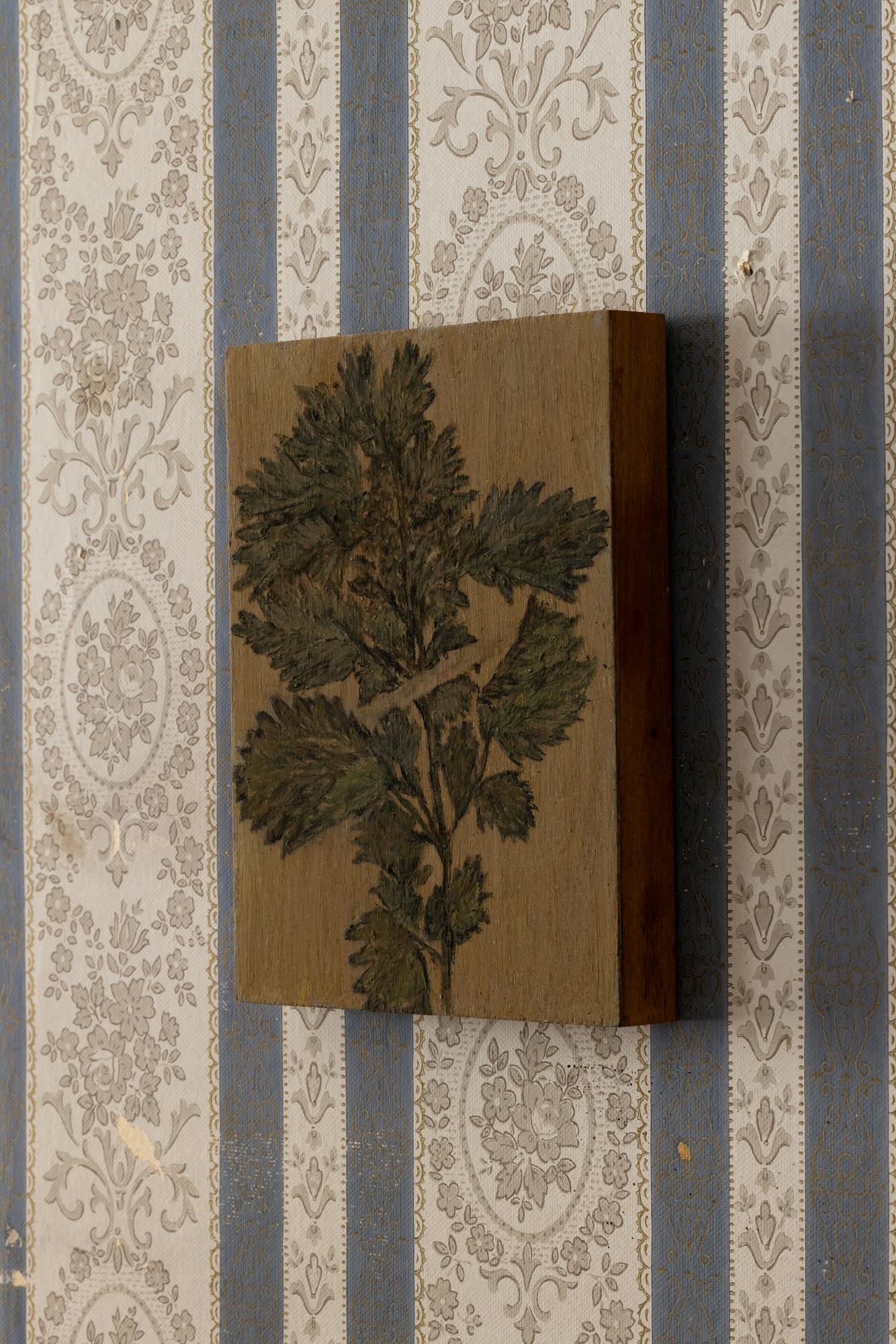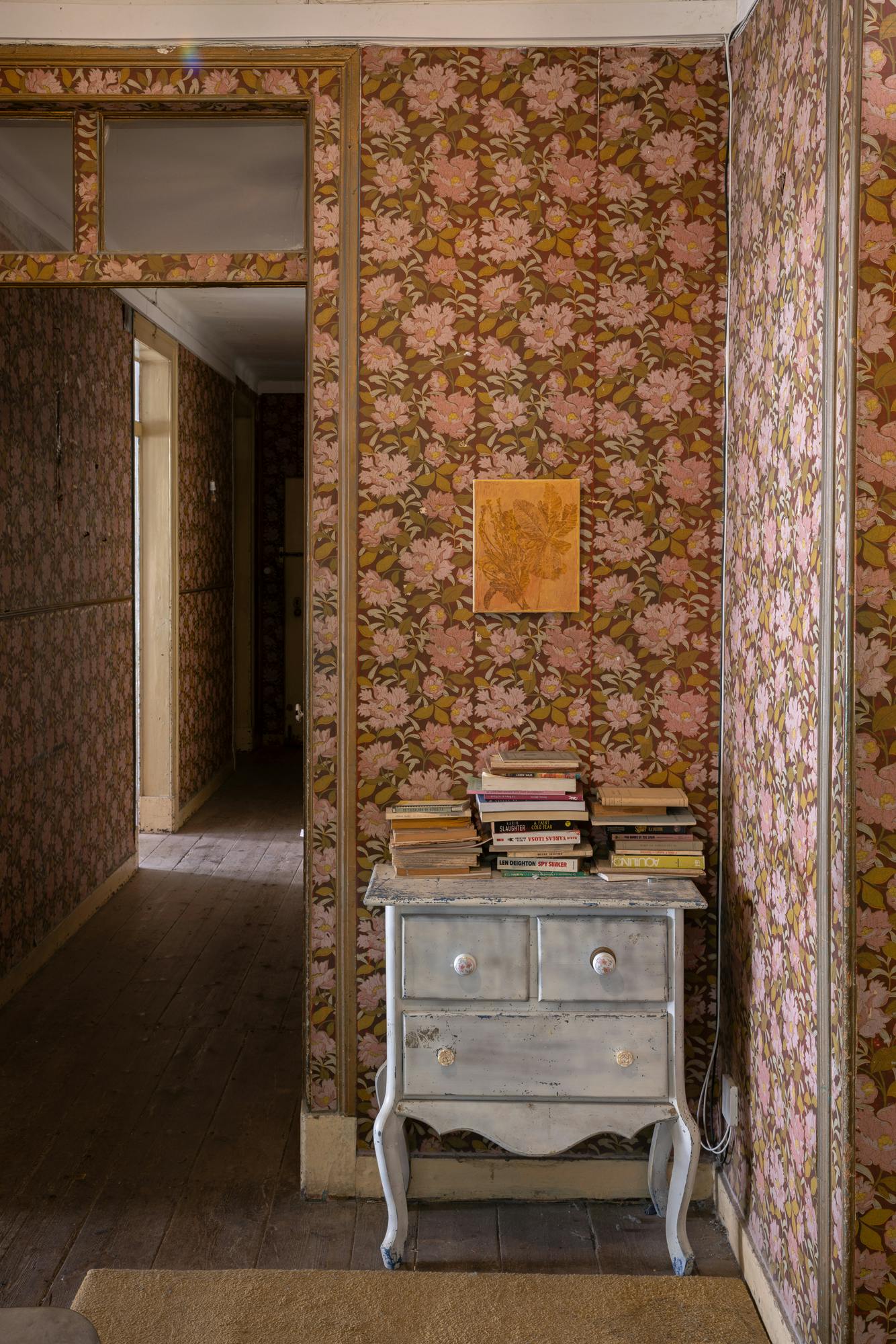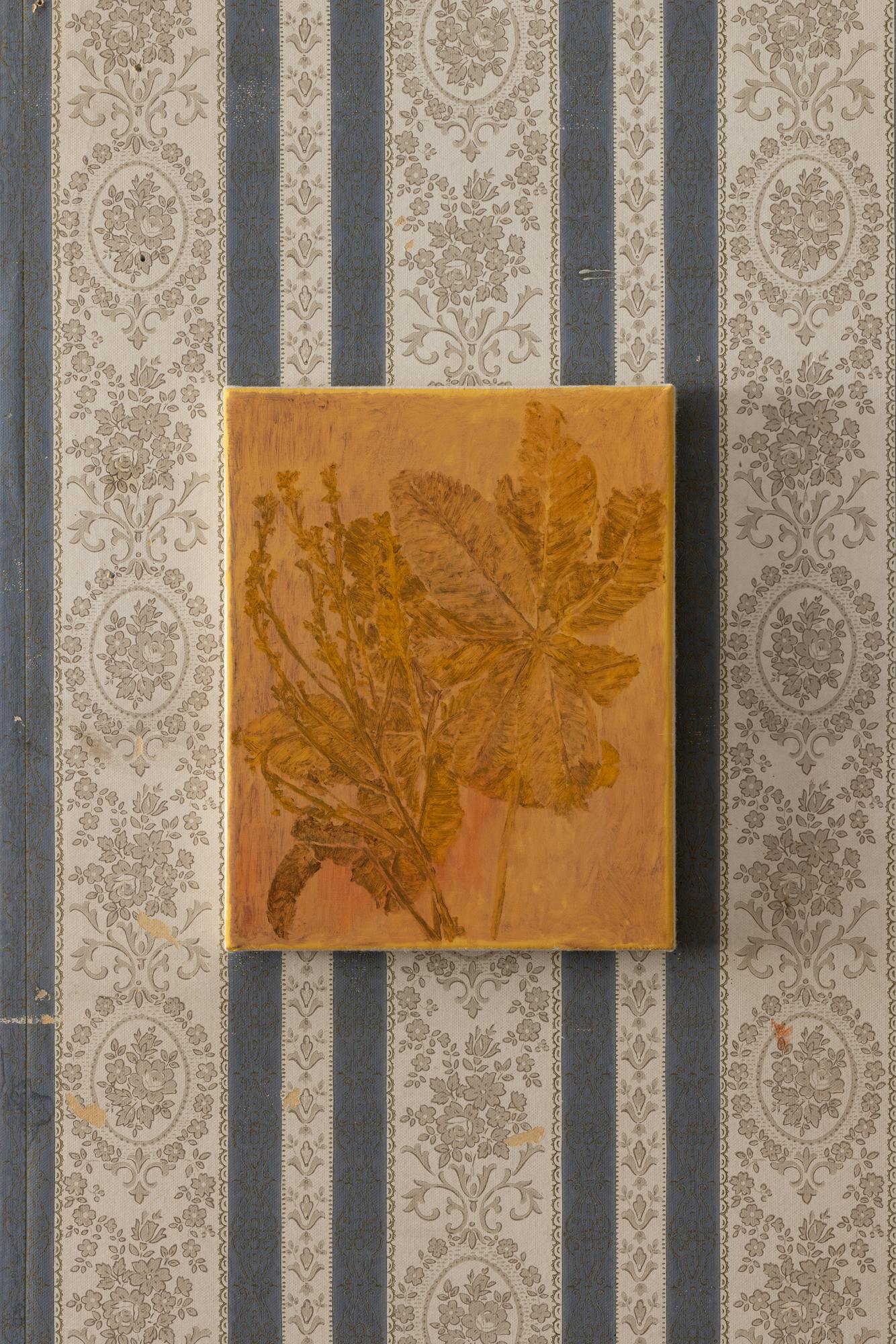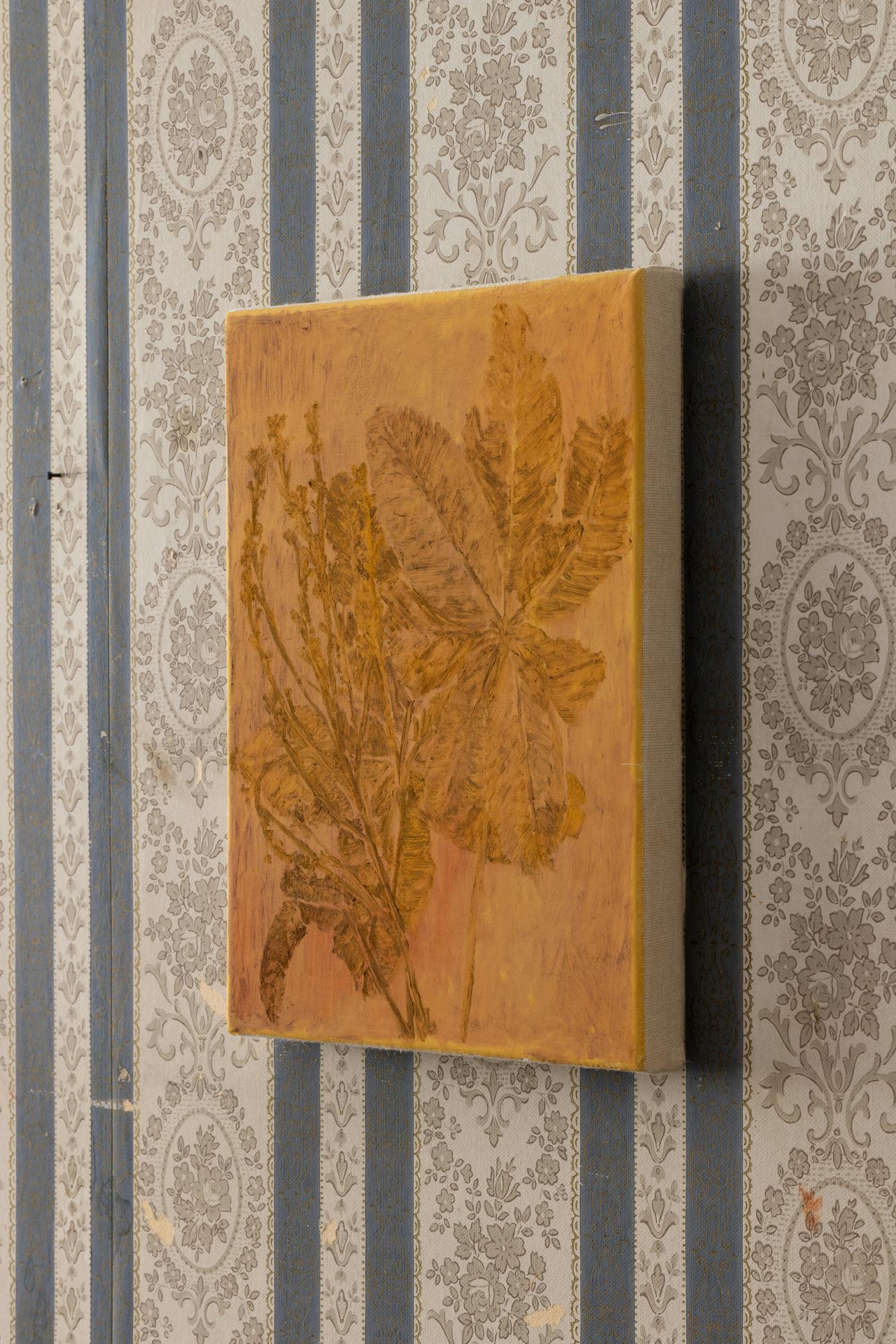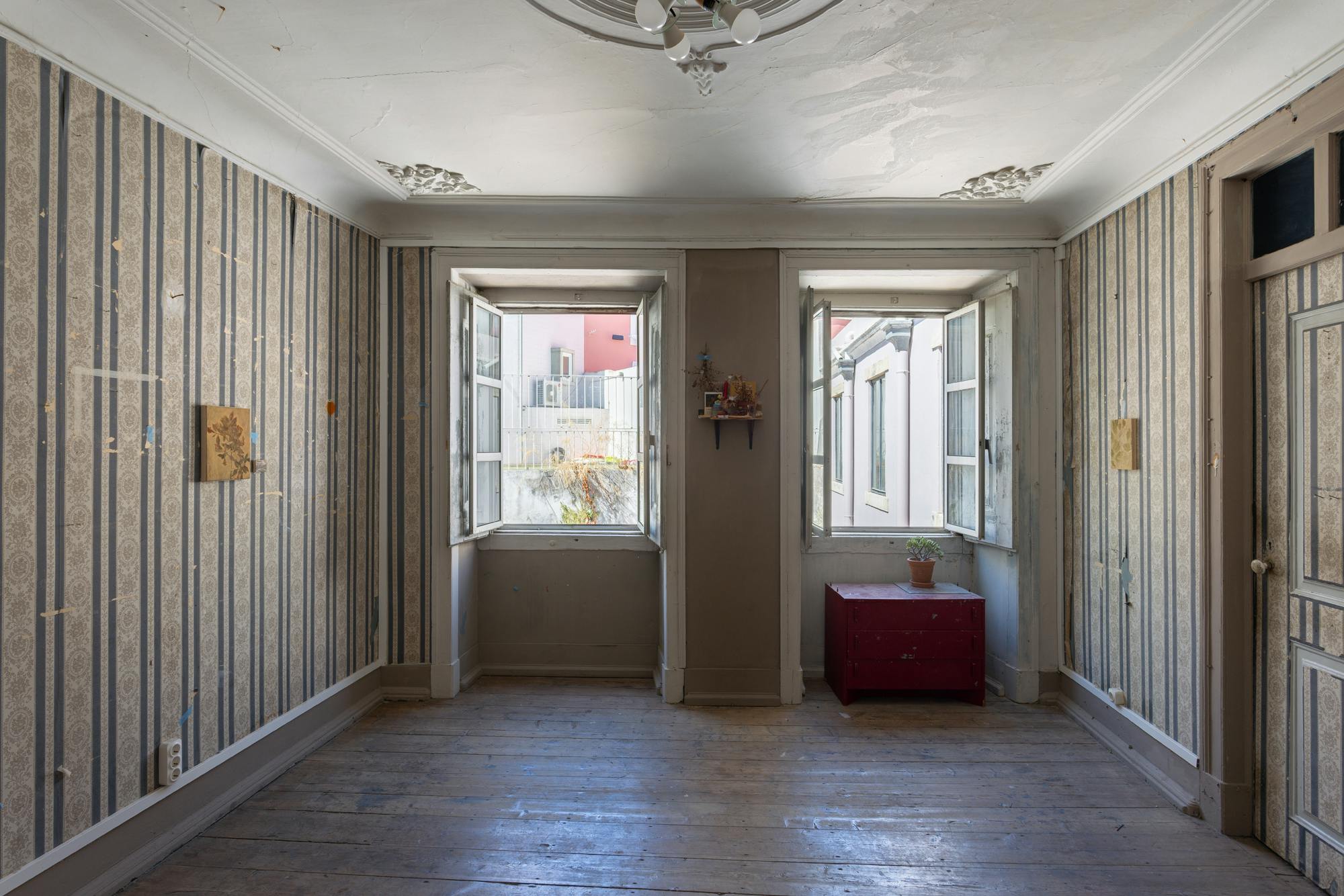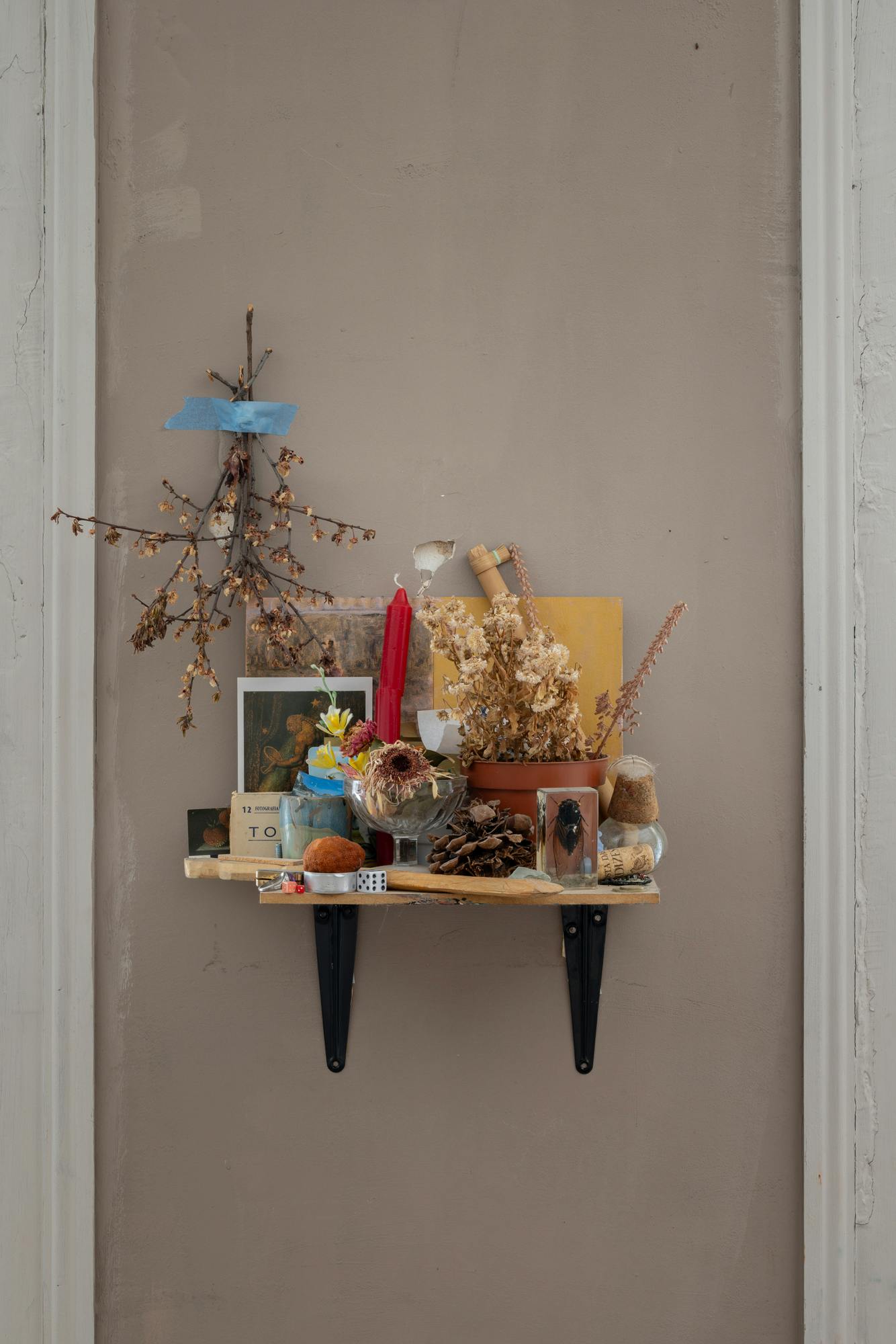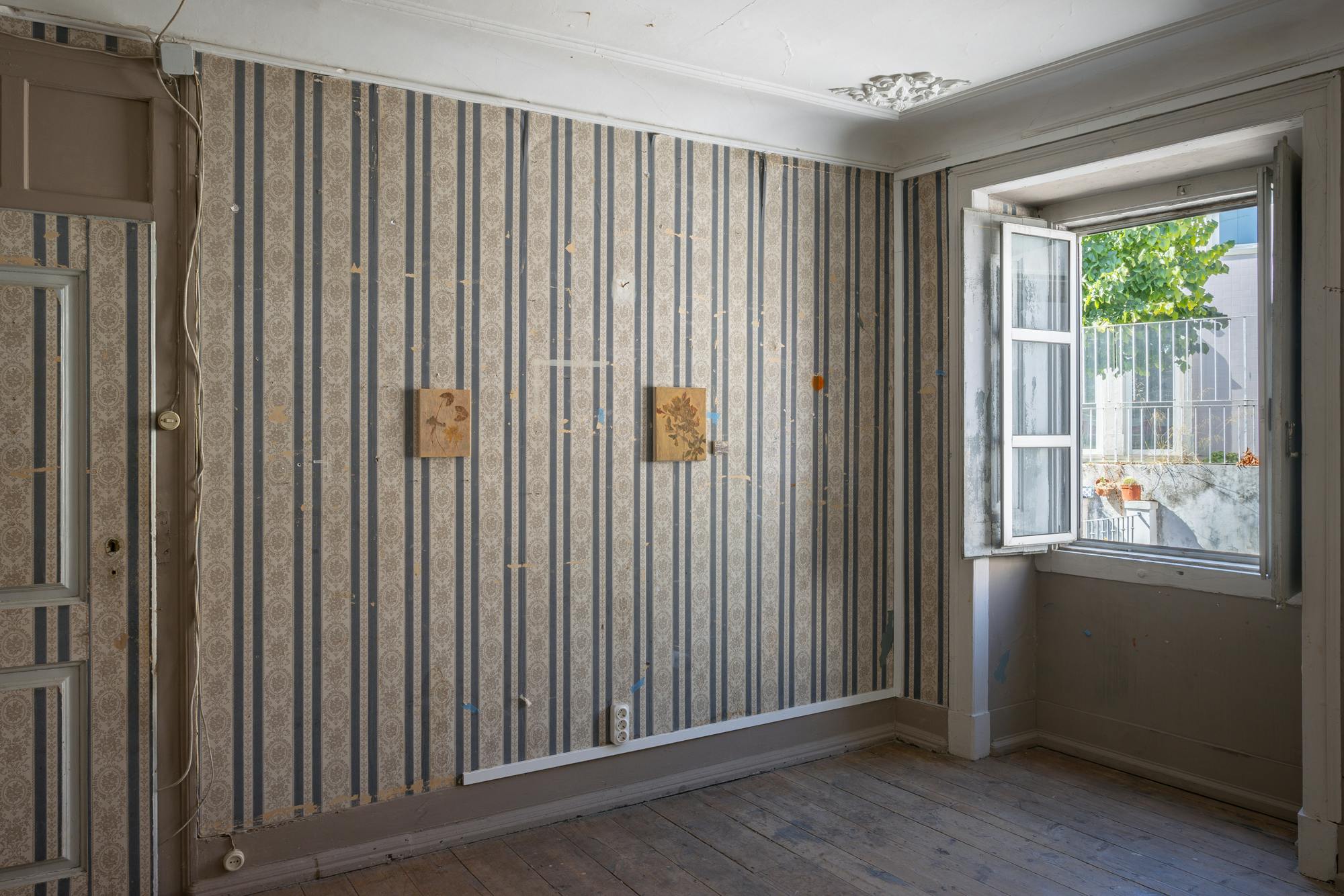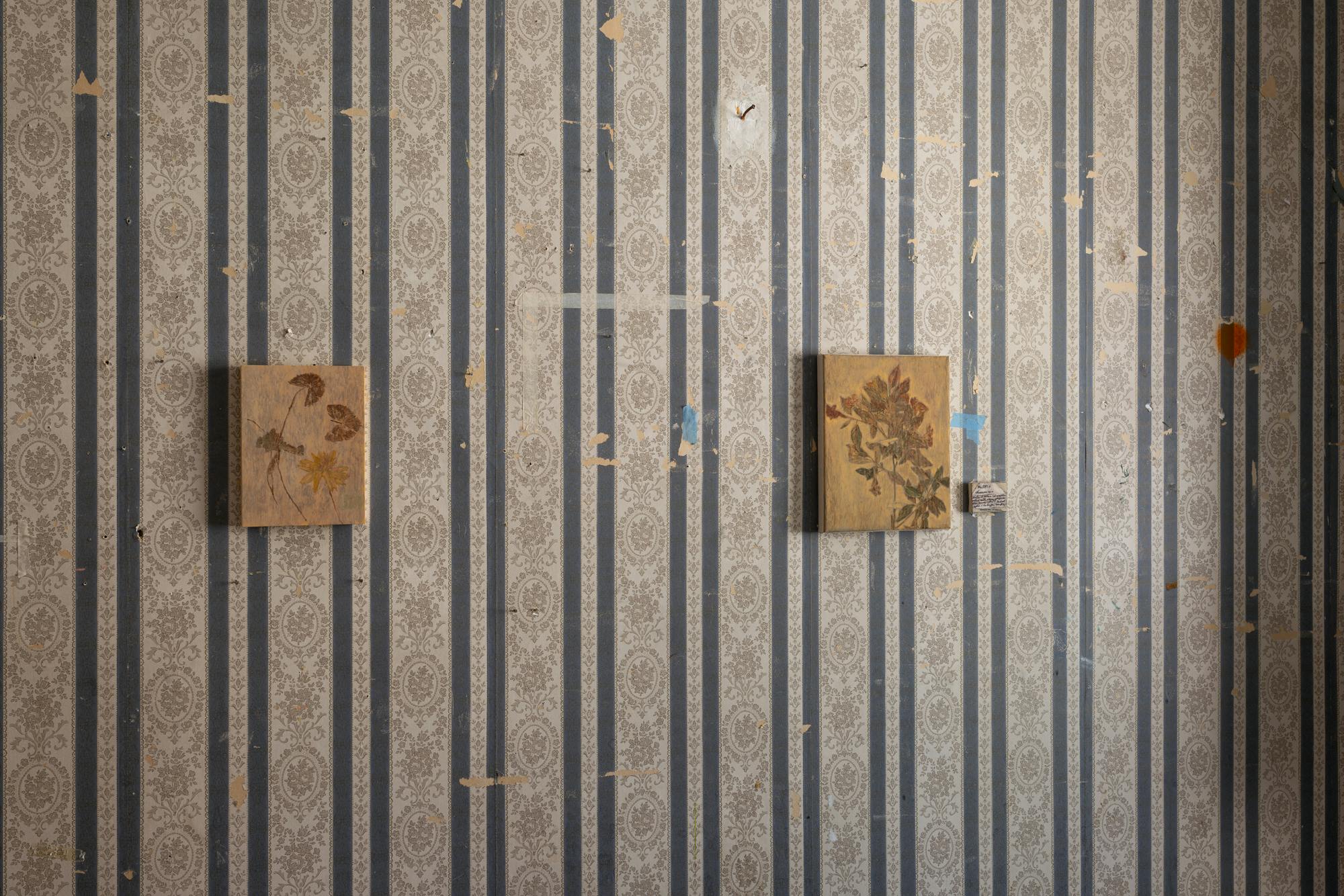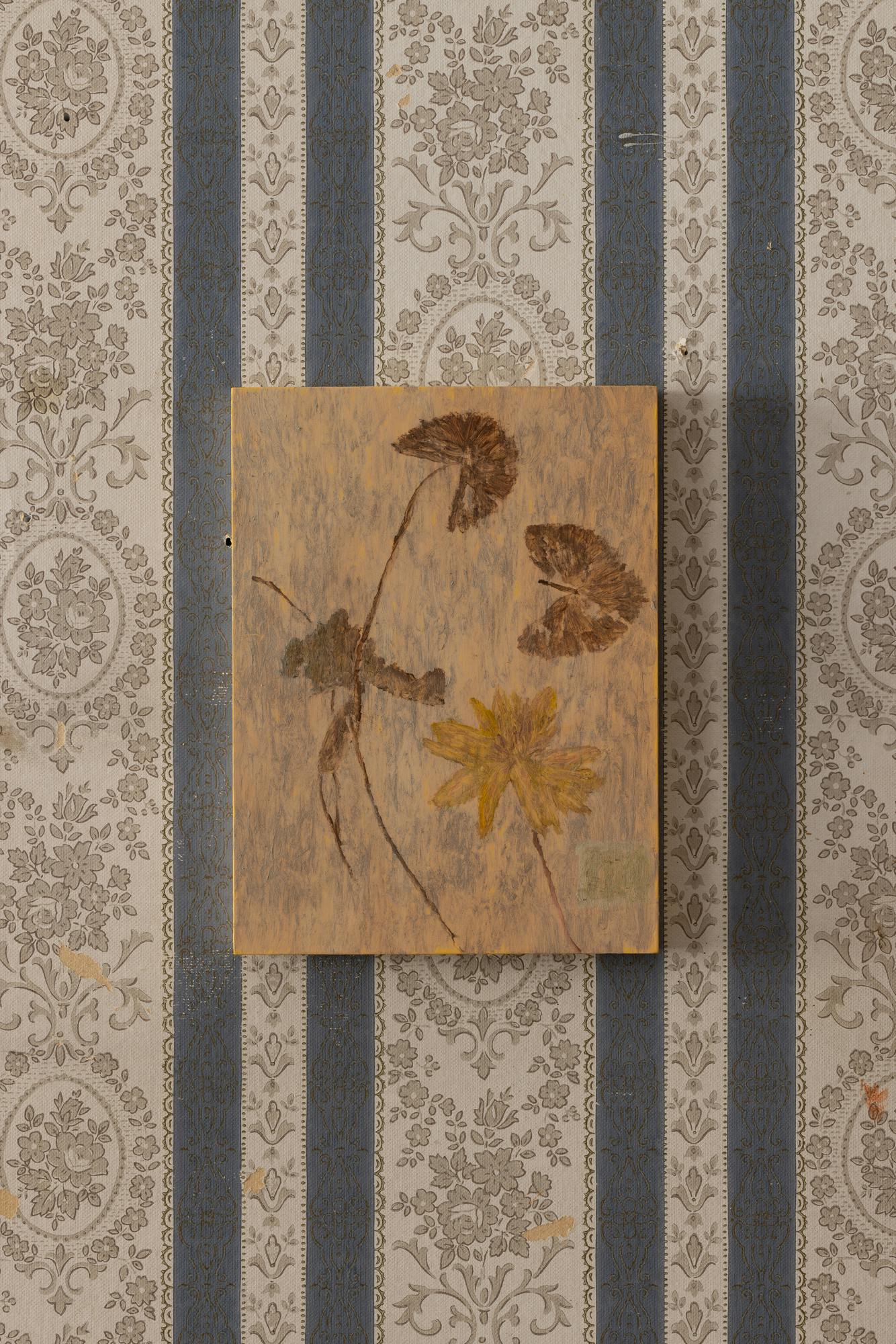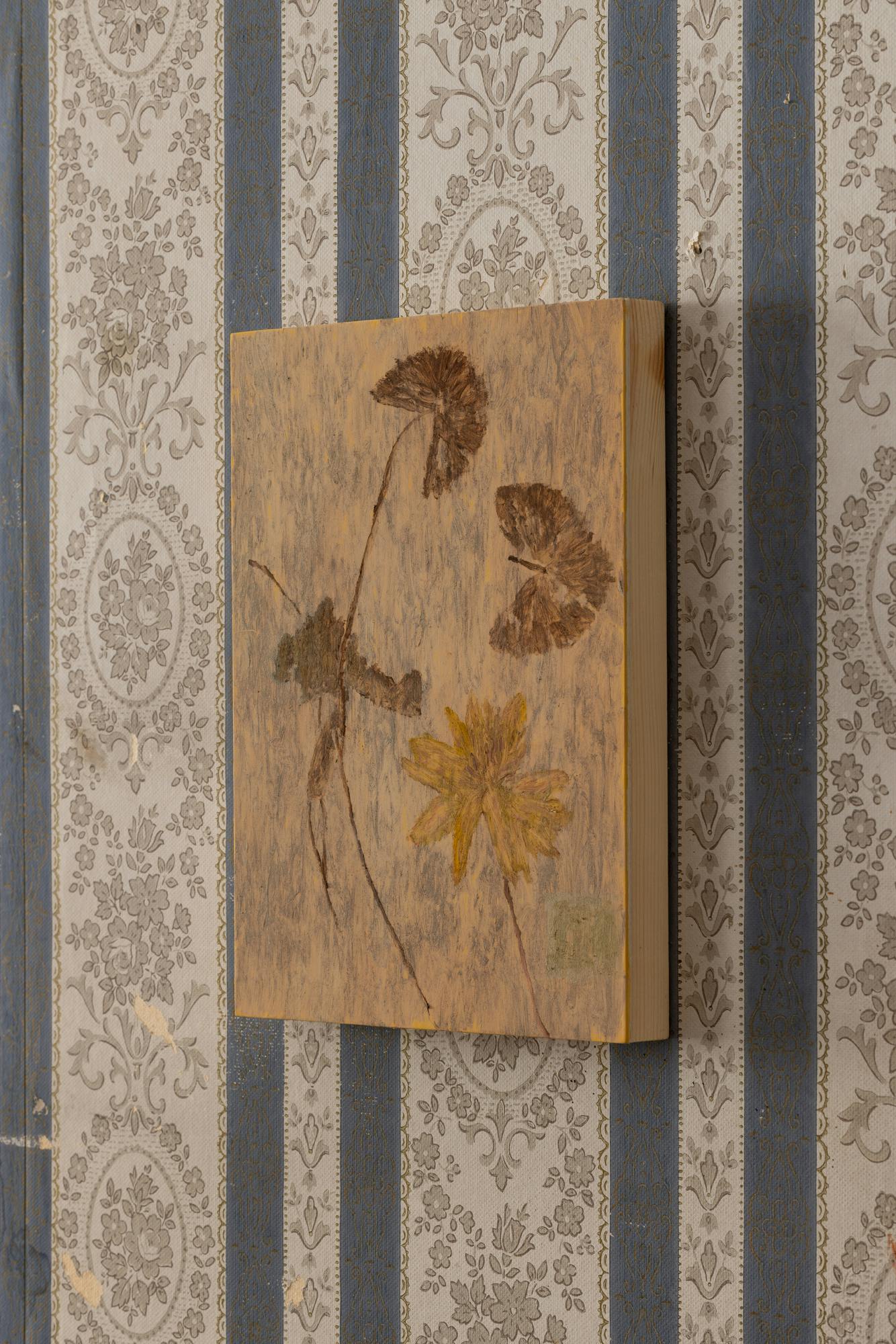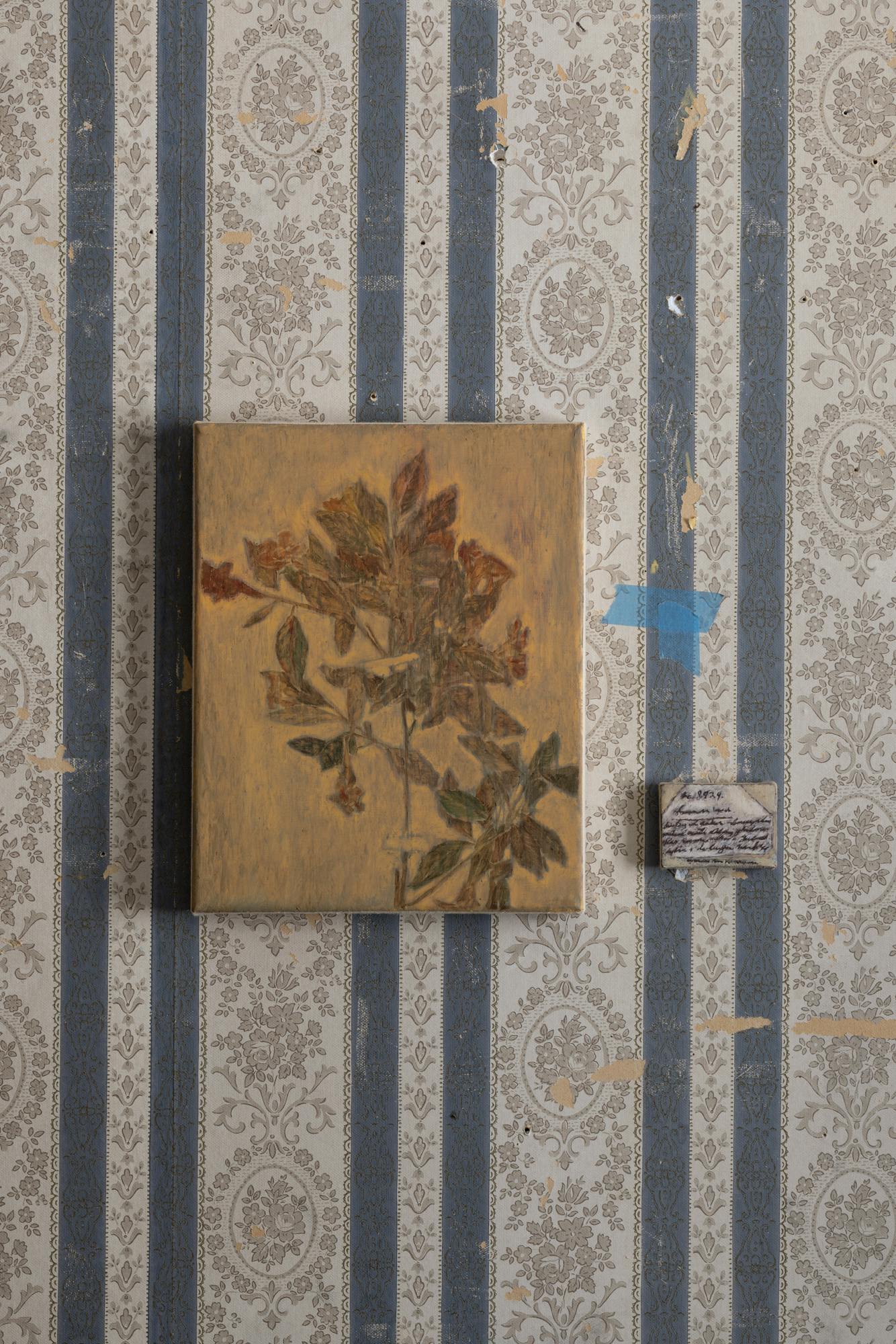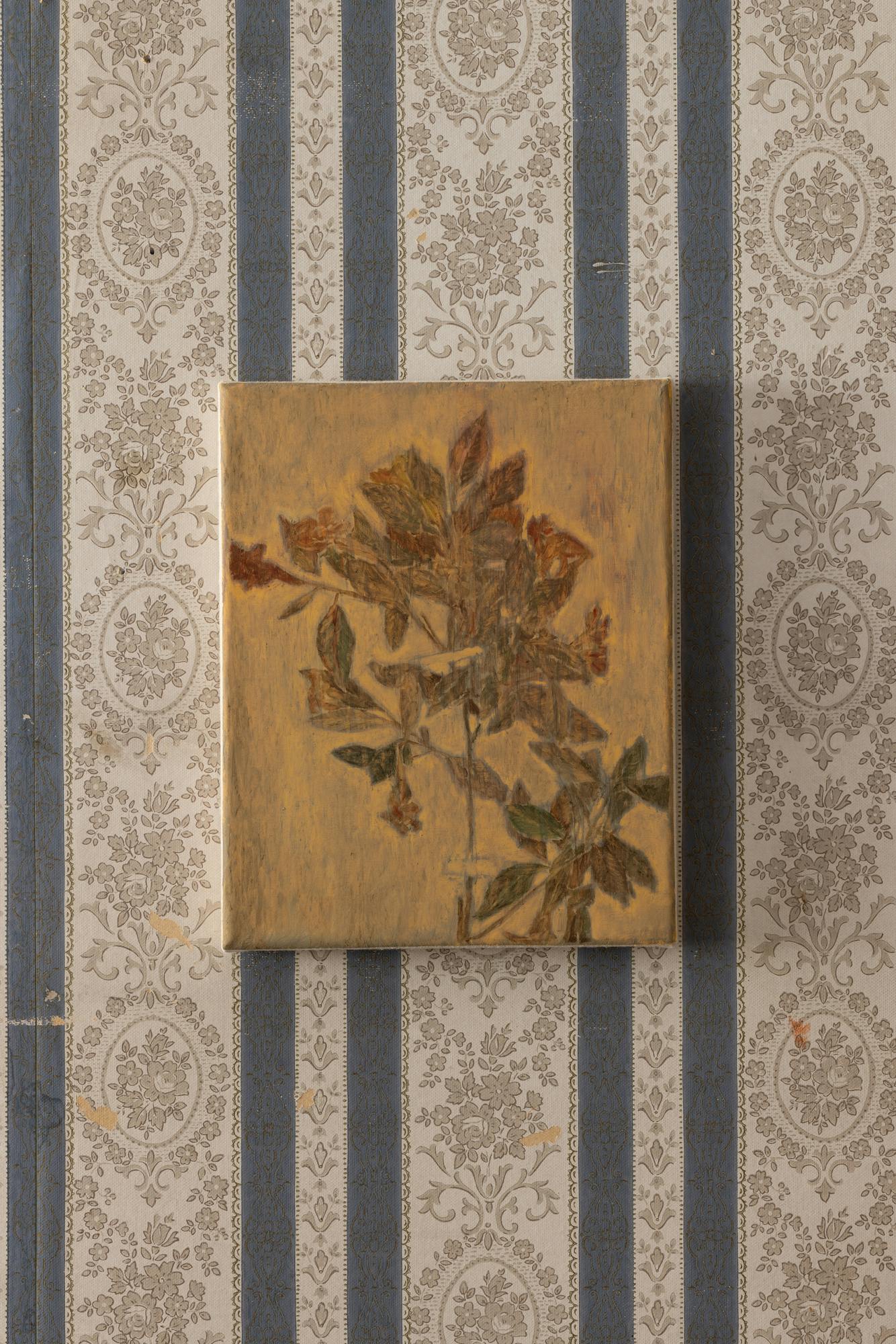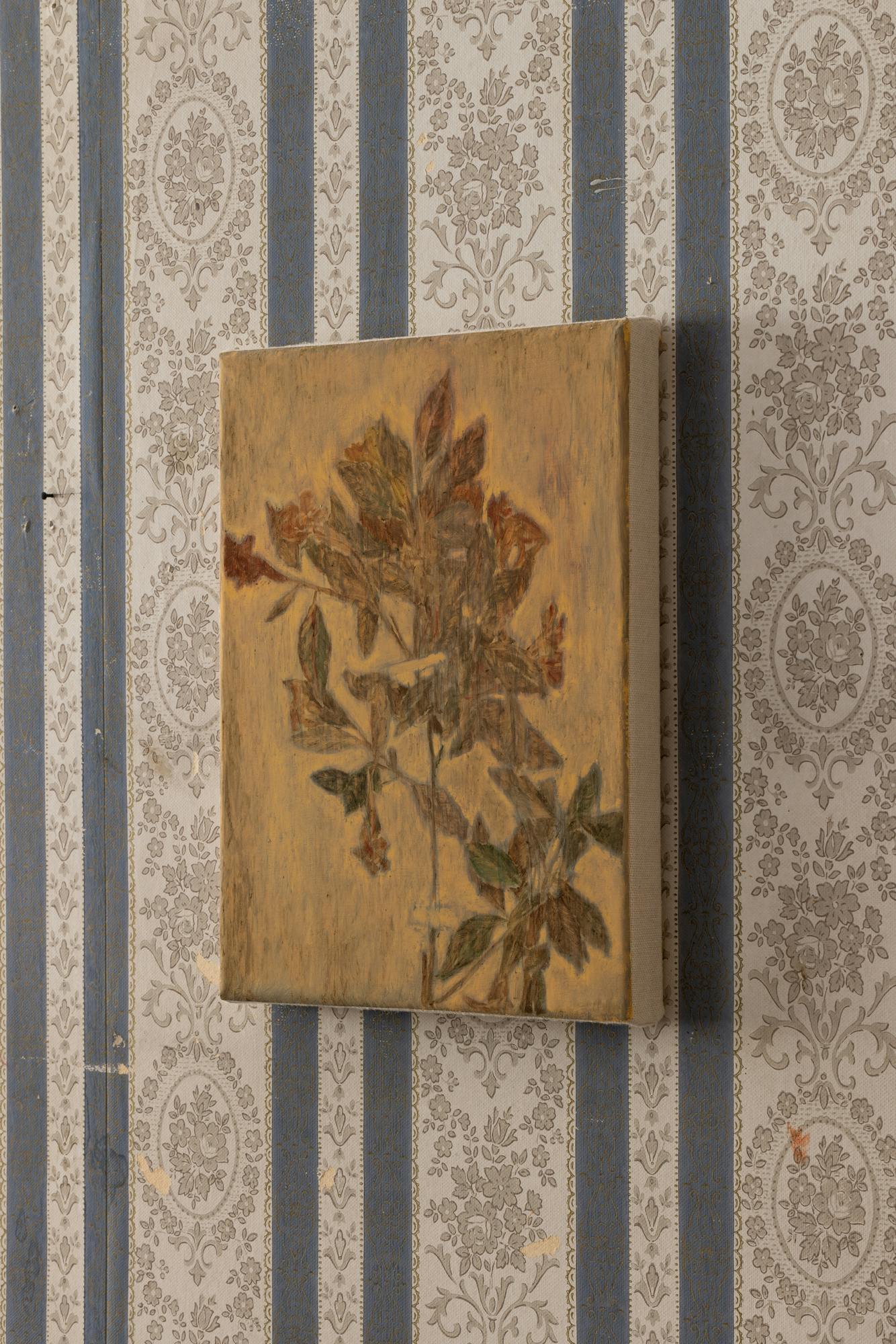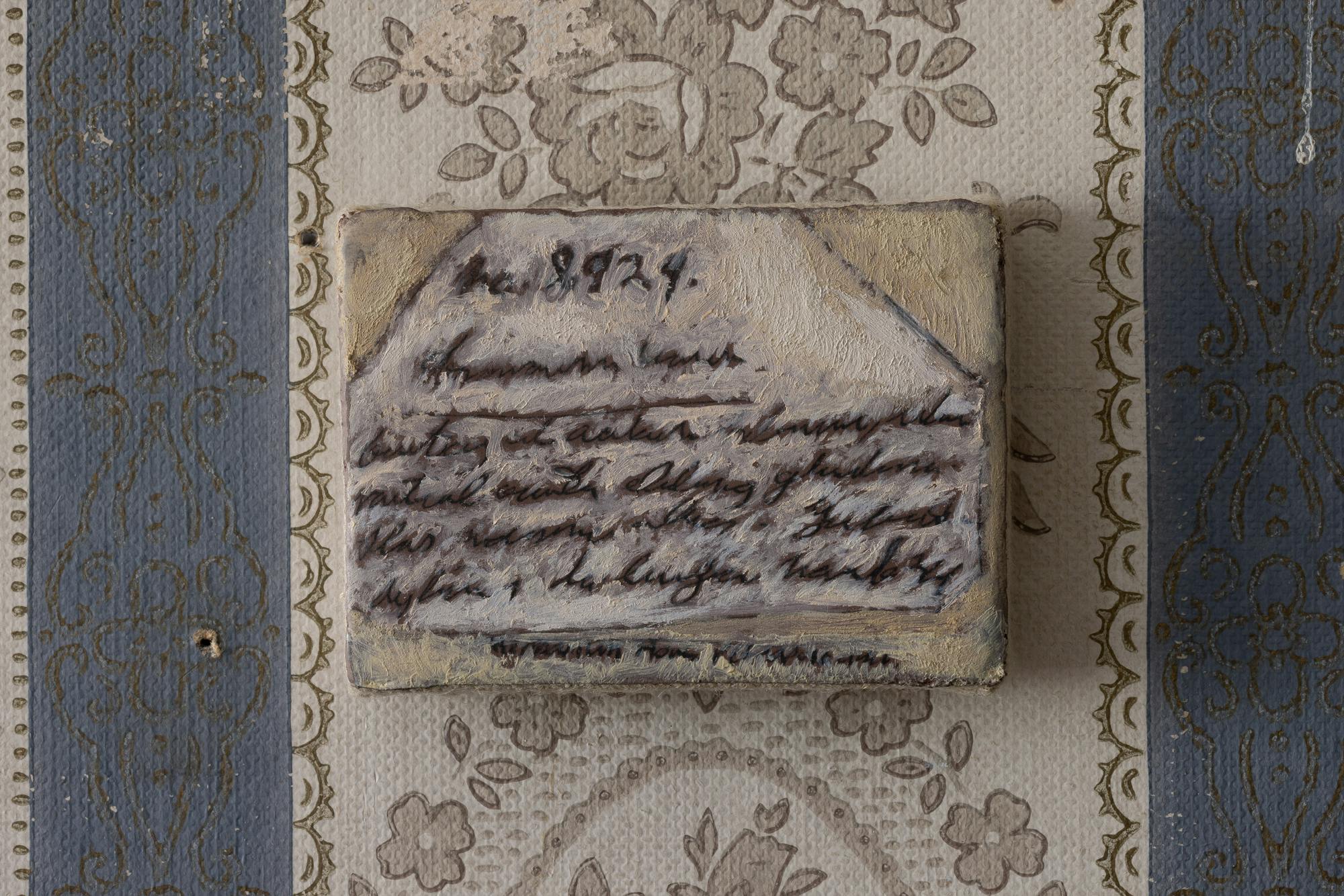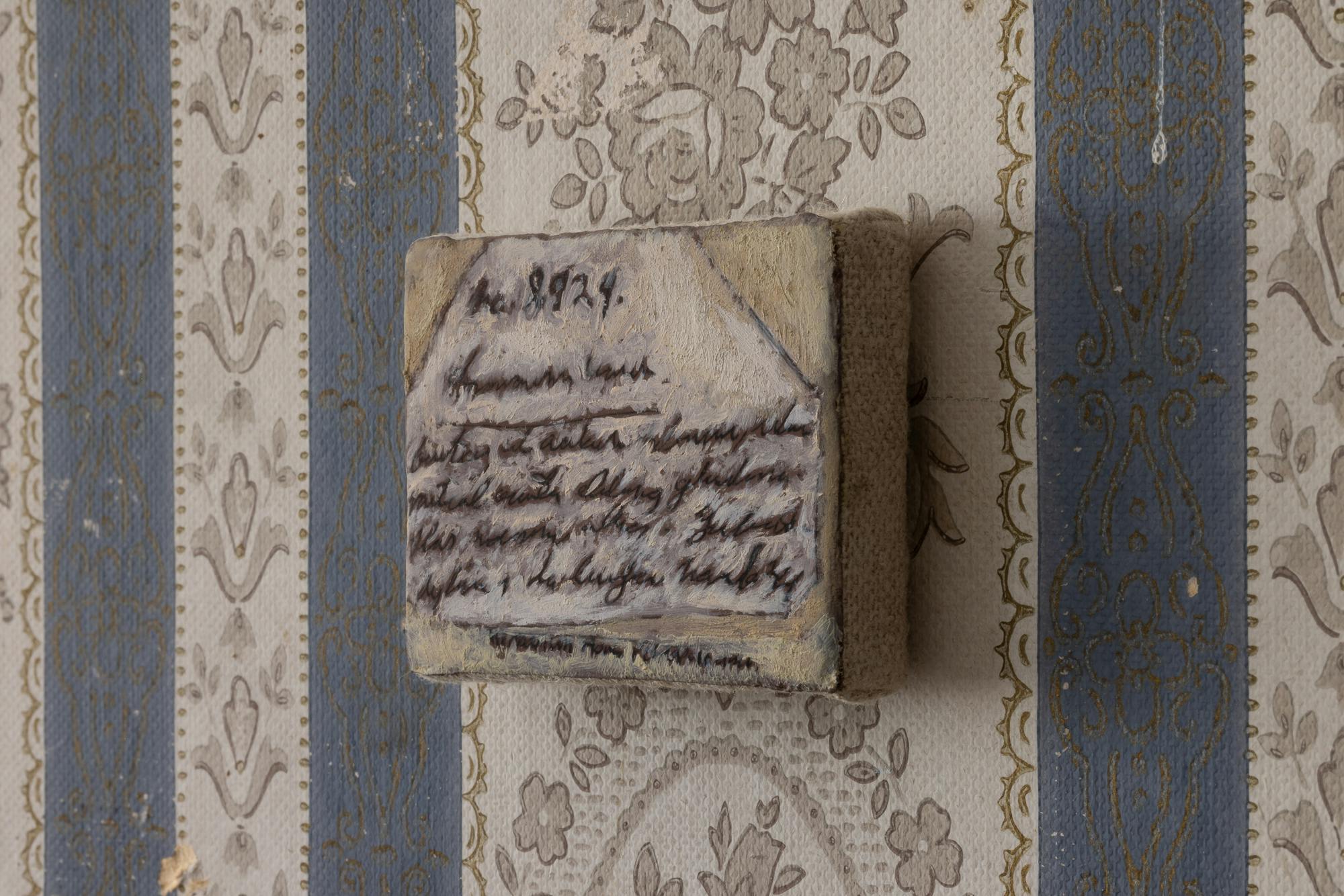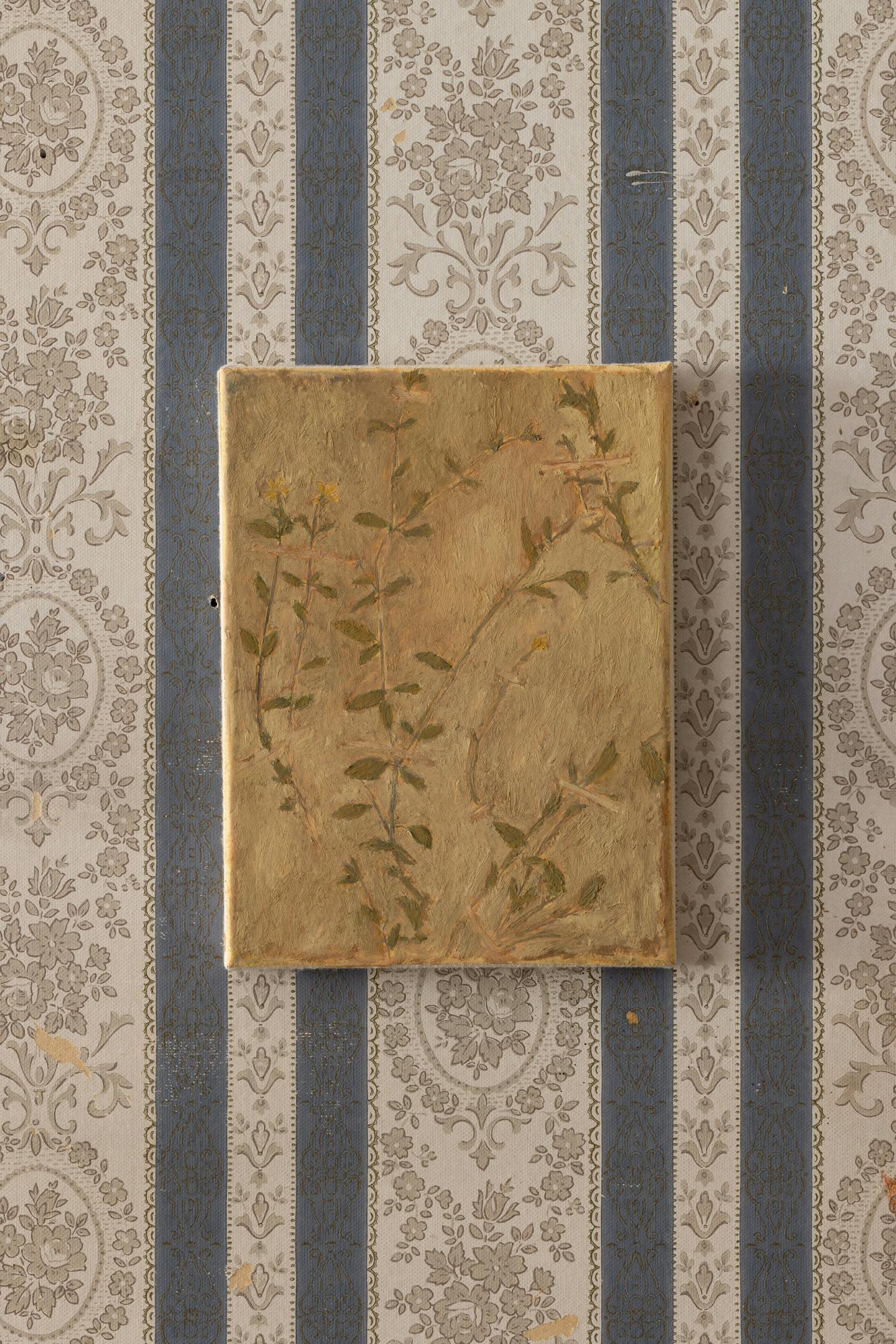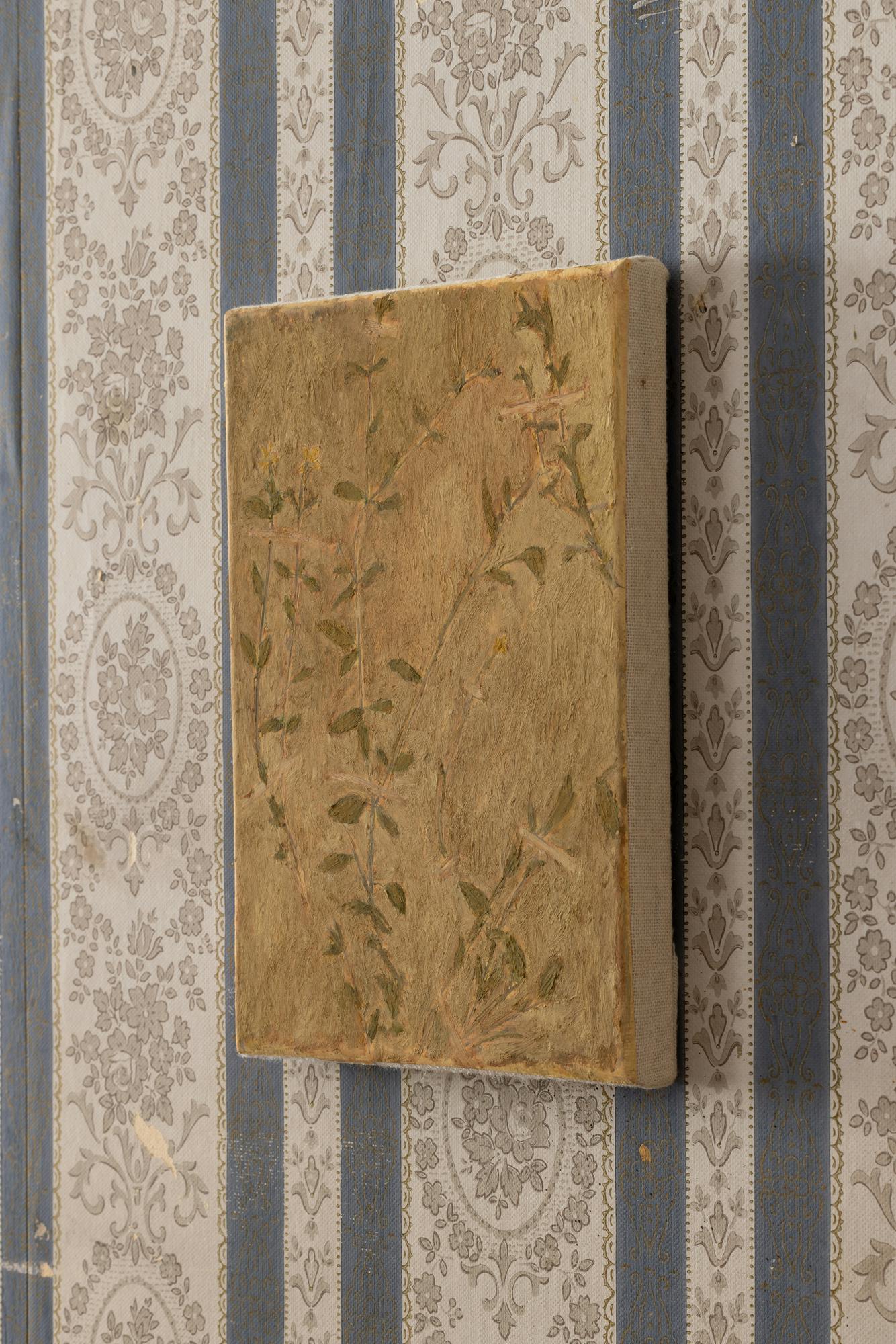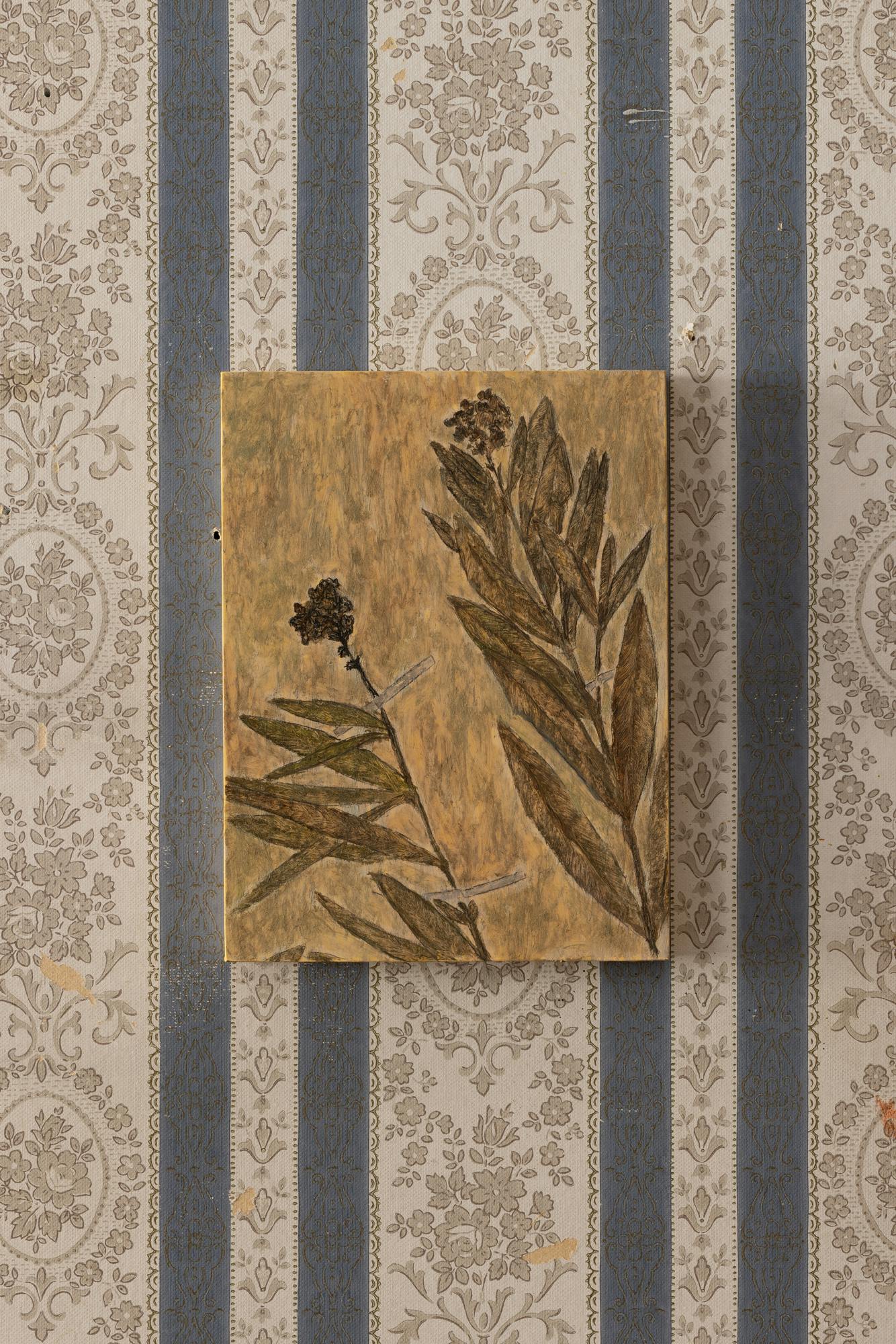
‘In the Herbarium, time is kept differently’
Pedro Liñares’ paintings gently question what it means to preserve, turning on the act of archiving and its afterlives, its prehistories.
Each of the paintings in Herbário take imaginative departure from a . In the intervening years, the archive has accumulated over , and has become an internationally recognised collection of . Liñares' interest in the archive is layered: drawn nostalgically to plants familiar from his childhood in Brazil; the ecological and historical specificity of this repository; the beauty of the accumulated ; but principally, to the archive's subsequent poetics – its dust, its margins, its absences.
In Herbário, Pedro Liñares creates twelve, carefully delineated paintings, each with measured, dappled brushwork depicted in muted and patinated palettes. His paintings borrow the visual grammar of the botanical specimen: centralised forms, hand-drawn labels, visible texture. Yet, in inverse proportion to the meticulousness of the archive, Pedro’s works are created from memory, with each individual plant guiding the painting that is made, shaped through intuitive gesture. Through meticulous cropping, reconfiguring, and layering, the works shore nostalgia, scientific detachment, and painterly excess, creating gentle yet symbolically contested surfaces.
Each piece is composed with a blend of pigments, beeswax, oil, and turpentine, resulting in surfaces that range from thickly matted to washily translucent. Liñares works atop supports crafted from salvaged wood, textured with grain and age, bringing a knowing symmetry to the compositions. In works such as ‘Sucupira’, and ‘Grazielia’, spindled stems seem carved into thickly grained paint, echoing the dimension of the originary archival samples.
Pedro’s practice is guided by inverse references: formative themes that serve as points of departure, only to be progressively unraveled or eclipsed in the final work. The presence of both Dutch and Flemish flower paintings – rich, sumptuous, exotic – and botanical illustrations – precise, legible, didactic – tessellate imprecisely. Whilst neither exaggerative or scientific, Pedro’s works sit somewhere between the two, borrowing the warmth of the Flemish painters, and the precision and care of botanical illustrations.
Liñares also draws from, yet pushes against, the lineage of the Nabis painters, particularly and Pierre Bonnard, whose style utilised impressionist gesture to depict floral scenes in intimate, enclosed environments. Symmetries resonate between Vuillard’s painterly fluency and works such as ‘Manacá de Cheiro’, where an inner light seems to silhouette the plant’s form, and deep ochres, vermillions, and vibrant blues resound.
The chief influence in Liñares’ work is that of Pedro Figari, a Uruguayan painter whose scenes of daily life are filled with colour and atmosphere. Figari’s embrace of opacity, his ability to mediate the quotidian and the painterly, and the works' indisputable vibrance have profoundly shaped Liñares’ own methods. In works like ‘Toque de oración’ or ‘Patio’, Figari evokes mood through a looseness of gesture – a strategy echoed in Liñaress’ Herbário, where brushstrokes blur and forms dissolve, enlivening aged organic matter. The influence of Brazilian modernist, , is also clear in Liñares’ work: particularly his use of bold motif atop tempered backgrounds, lending a resounding spirit to the paintings.
Liñares’ exploitation of the archive’s gaps and ellipses is perhaps most clear in his smaller, label works. Here, legibility becomes symbolic, the works’ cryptic notations, scribbled borders, and ink-diffused halos hinting at language’s decay, and gesturing not towards taxonomy, but at what escapes it.
Through attrition, erosion, and reconfiguration, Herbário is a constellation of afterimages and impressions, creating vibrant afterlives from the archive of Herbarium of the Rio de Janeiro Botanical Garden.
References
1
2
3
4
5
6
7
8
9
10
11
12
13

